Creating a personal sanctuary for relaxation and mindfulness doesn't require a large amount of space. A small Zen garden can transform a tiny balcony, a forgotten patio corner, or even an indoor tabletop into a peaceful outdoor retreat. These gardens, inspired by Japanese *karesansui* (dry landscape) principles, use carefully arranged rocks, raked sand or gravel, and minimal greenery to create a serene miniature landscape. The focus is on simplicity, naturalism, and finding beauty in asymmetry. By thoughtfully selecting and placing each element, you can design a space that encourages quiet contemplation and a deep connection to nature.
1. Miniature Raked Sand Zen Garden Box
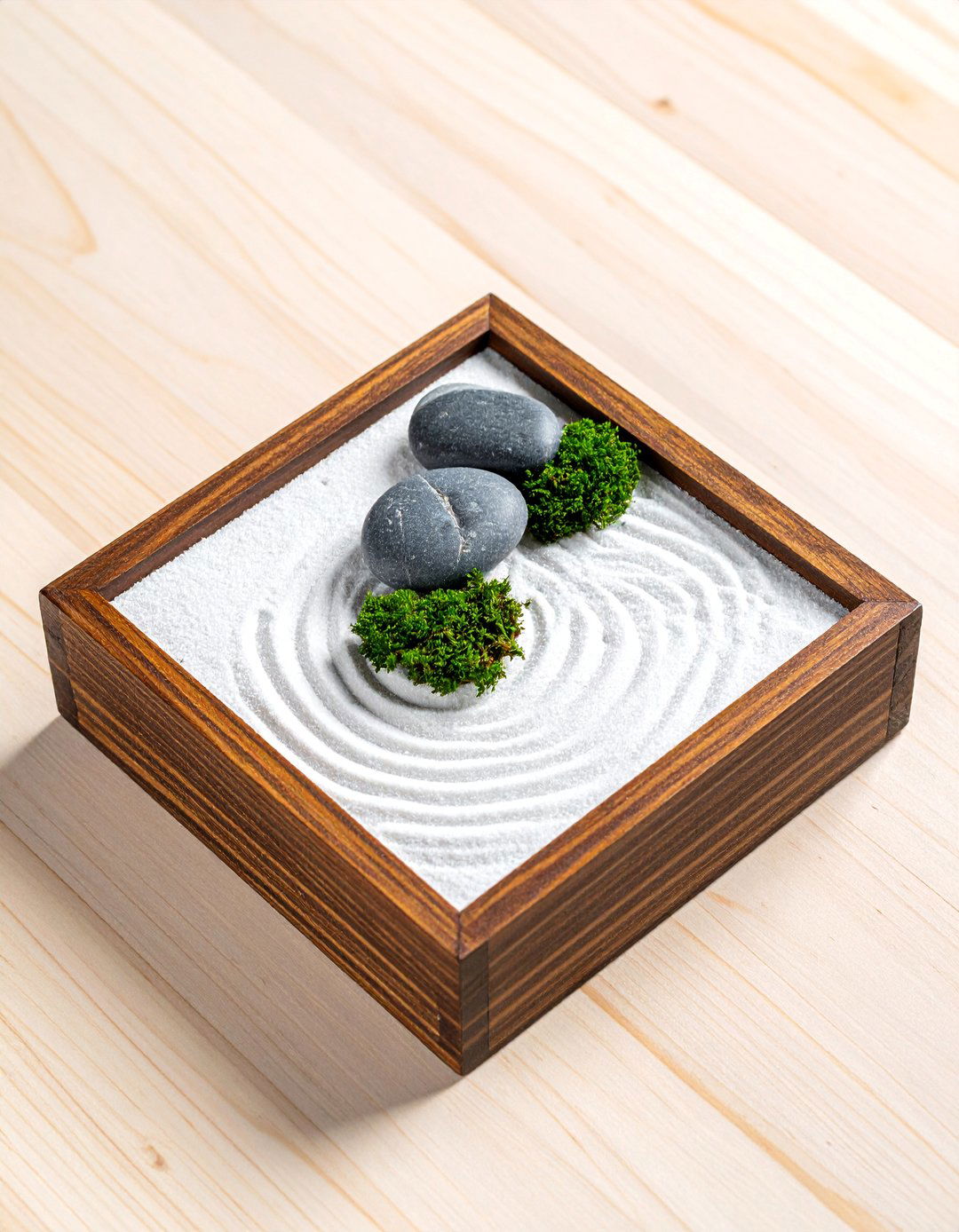
A tabletop or container Zen garden box is the perfect starting point for embracing tranquility in a limited area. This self-contained landscape allows you to practice the meditative art of raking sand into patterns like ripples or waves, symbolizing water. To create one, select a shallow tray or box made from wood or ceramic. Fill it with fine white or light-colored sand. Carefully place a few small, smooth stones to represent mountains or islands. You can also add a tiny preserved moss accent for a touch of green. The act of raking itself becomes a mindful practice, helping to calm the mind and focus your thoughts.
2. Incorporating a Stone Lantern Feature
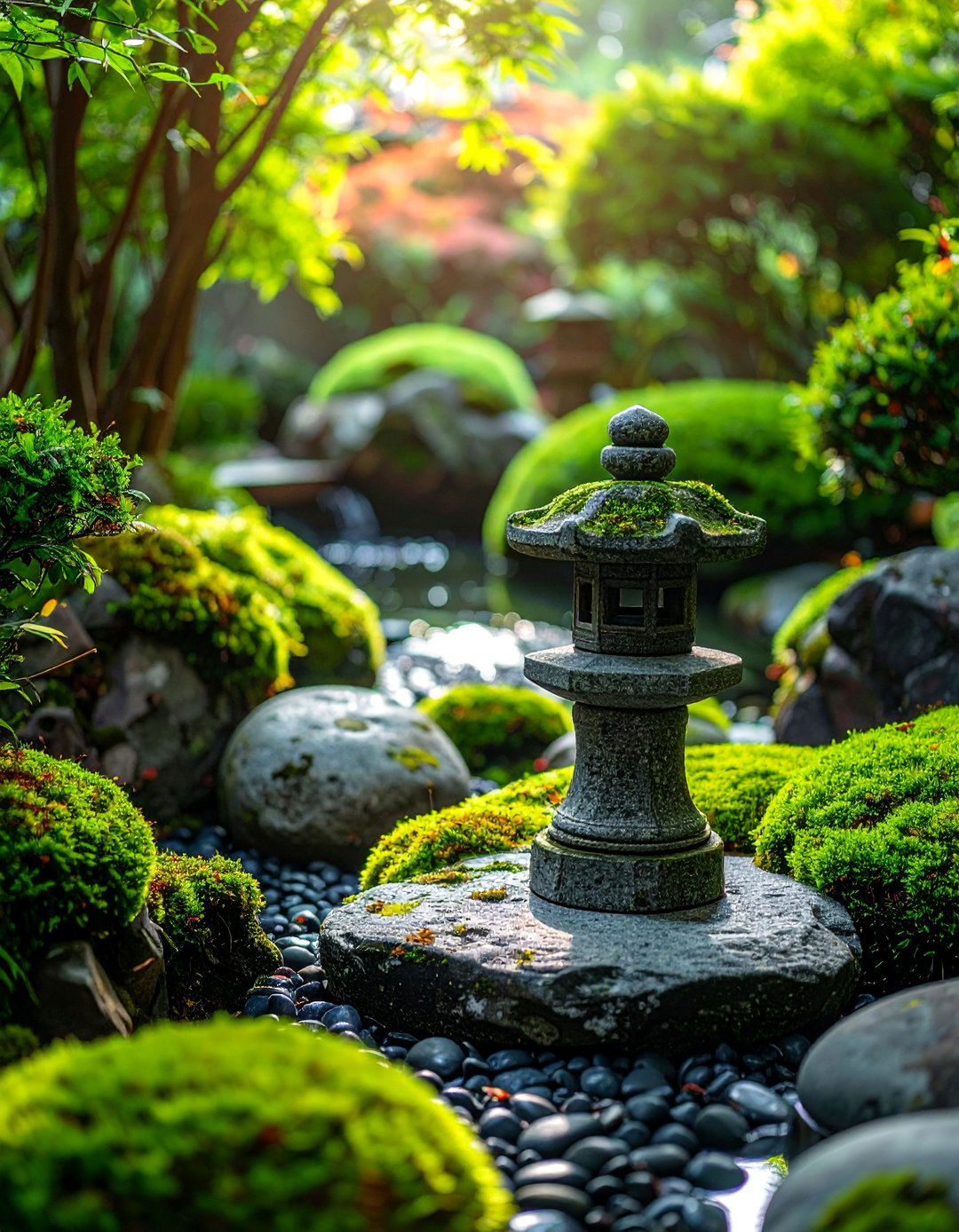
For an authentic touch that adds both structure and gentle illumination, consider integrating a small stone lantern (*tōrō*) into your Zen garden design. Traditionally used to light the paths to temples, these lanterns serve as a powerful focal point. In a small garden, a miniature or compact lantern placed thoughtfully among rocks and moss creates a sense of age and permanence. Choose a style that complements your space, such as a simple Oki-gata (small, legless lantern). The lantern doesn't need to be functional; its sculptural presence alone is enough to evoke a feeling of serenity and timelessness, especially when partially obscured by a plant.
3. Creating a Dry Stream Bed Zen Garden
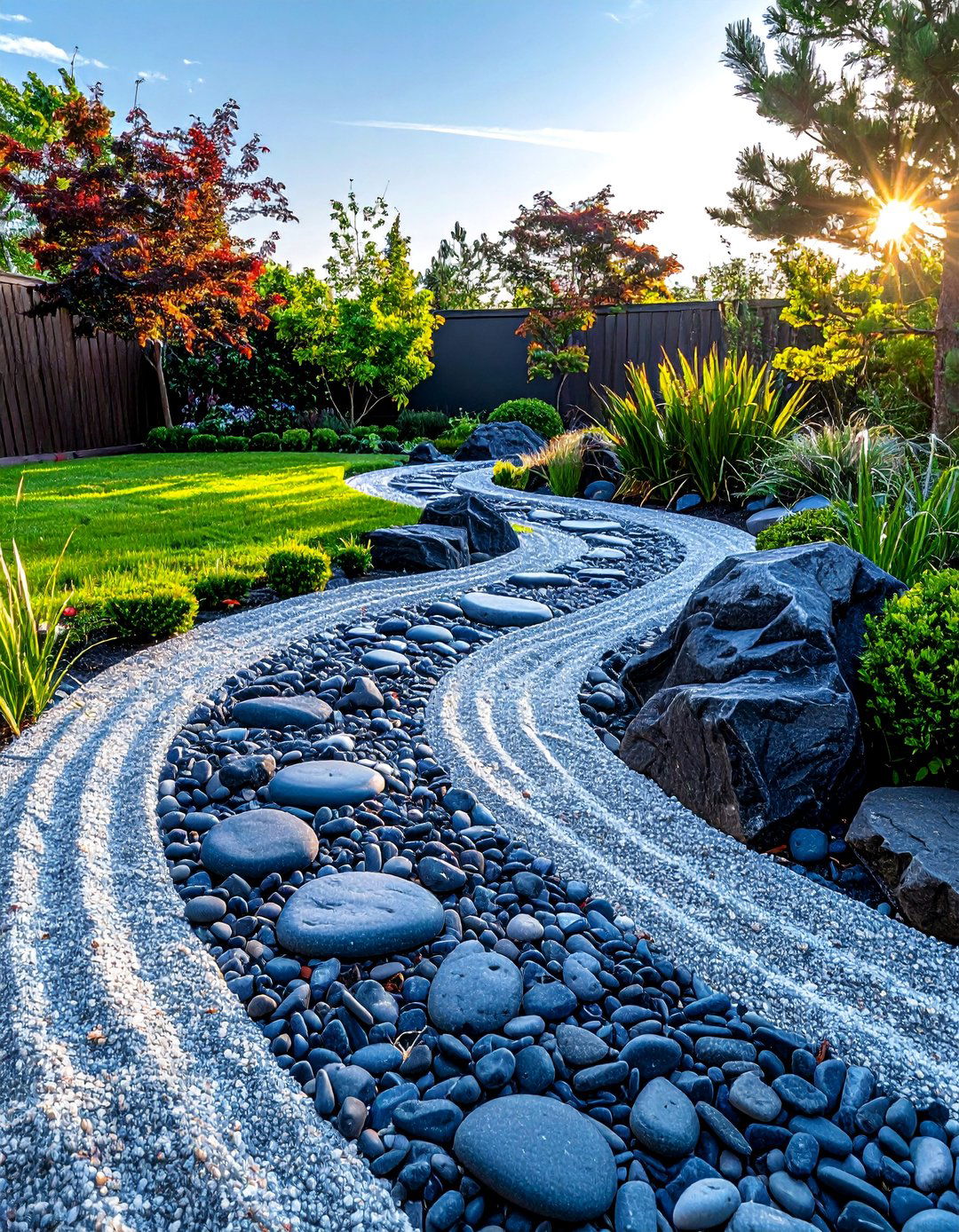
A dry stream bed (*kare-nagare*) is a beautiful way to introduce the illusion of flowing water without any plumbing. This feature uses carefully selected and arranged river rocks, pebbles, and gravel to mimic the path of a stream or river winding through your garden. By varying the size, color, and texture of the stones, you can create a dynamic sense of movement and direction. The "stream" can meander around larger "boulder" rocks or patches of moss, guiding the eye through the miniature landscape. This design element adds visual interest and reinforces the natural, flowing aesthetic central to Zen philosophy, making the small space feel more expansive.
4. Using Moss as a Living Groundcover
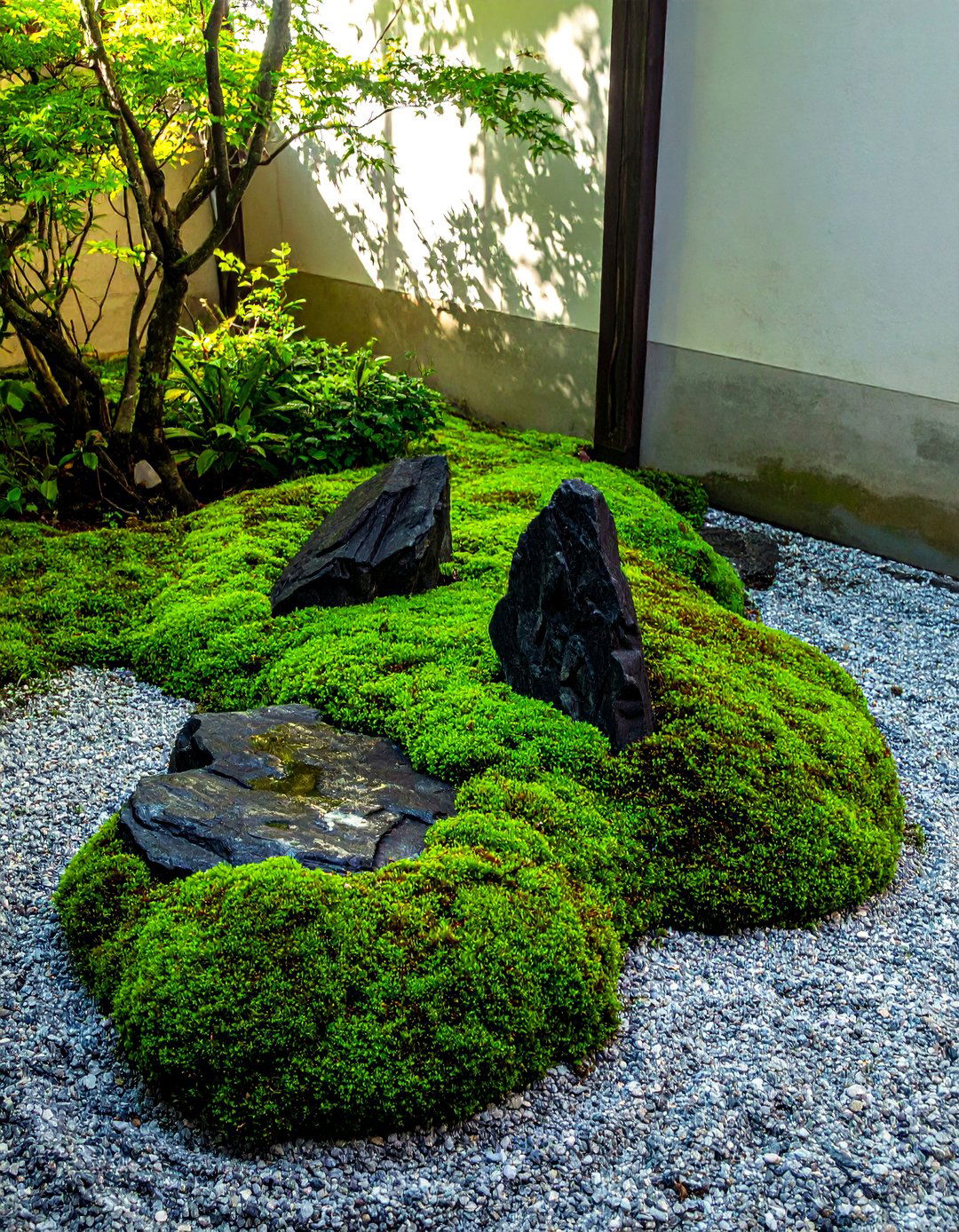
What better way to add vibrant, low-maintenance greenery than by using moss as a living carpet in your small Zen garden? Moss provides a lush, velvety texture that contrasts beautifully with the starkness of sand and stone. It thrives in shaded, moist conditions and requires very little soil, making it ideal for compact spaces. You can cultivate different varieties to create a patchwork of greens, from deep emerald to bright chartreuse. Arranging patches of moss around the base of rocks or along the edge of a dry stream bed suggests age and a deep connection to nature, instantly making the garden feel established and serene.
5. A Vertical Bamboo Screen Zen Garden
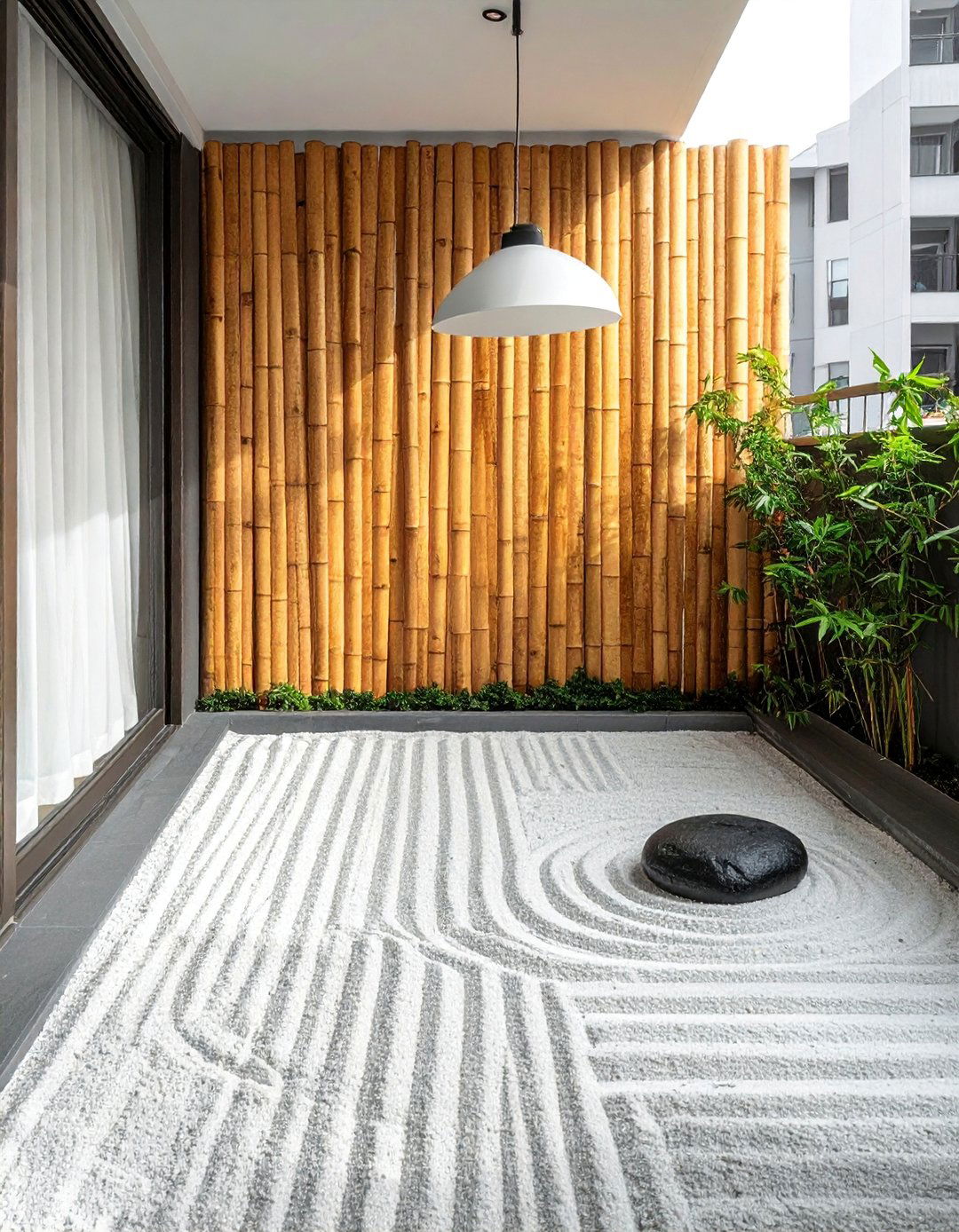
To define your peaceful retreat and add a sense of privacy, a vertical bamboo screen is an excellent addition. This element works particularly well in small balcony or patio gardens where you want to block an unsightly view or create a feeling of enclosure. A simple screen made of natural bamboo poles tied together provides an organic, linear backdrop that complements the other Zen elements. The vertical lines draw the eye upward, making the space feel taller. You can also plant a single clumping bamboo variety in a container placed against a wall, achieving a similar effect with living greenery that rustles gently in the breeze.
6. The Single Statement Boulder Zen Garden
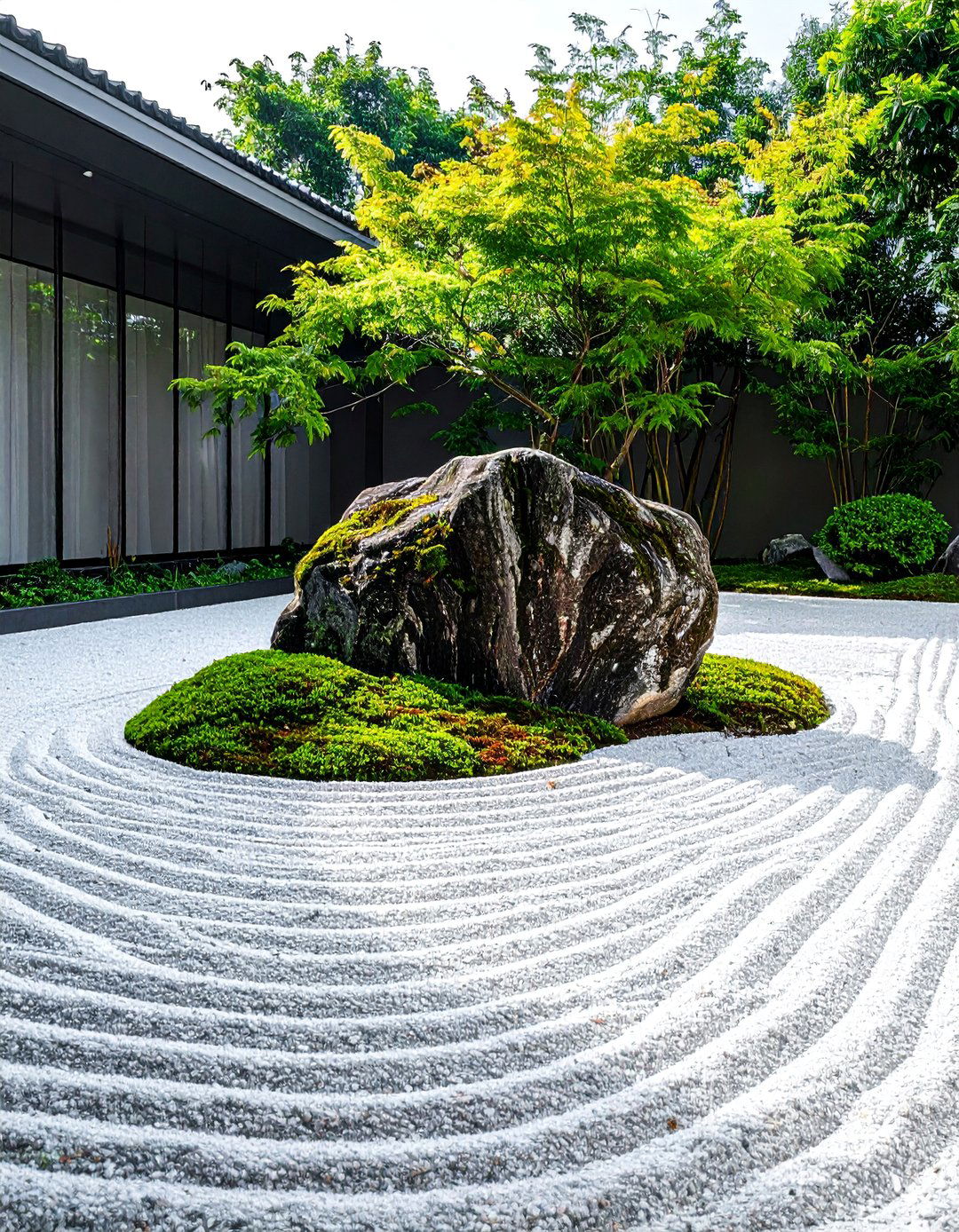
Embracing the principle of simplicity (*Kanso*), a Zen garden can be powerfully effective with just a single, carefully chosen statement boulder. This approach focuses the entire design around one significant stone, which represents a mountain or a sacred island. The rock should have an interesting shape, texture, or color that draws the eye and invites contemplation. Place it asymmetrically within a bed of raked sand or fine gravel. The surrounding emptiness is just as important as the rock itself, creating a profound sense of balance and stillness. This minimalist design is perfect for very small spaces, proving that less can truly be more.
7. A Zen Garden with a Shishi-Odoshi Feature
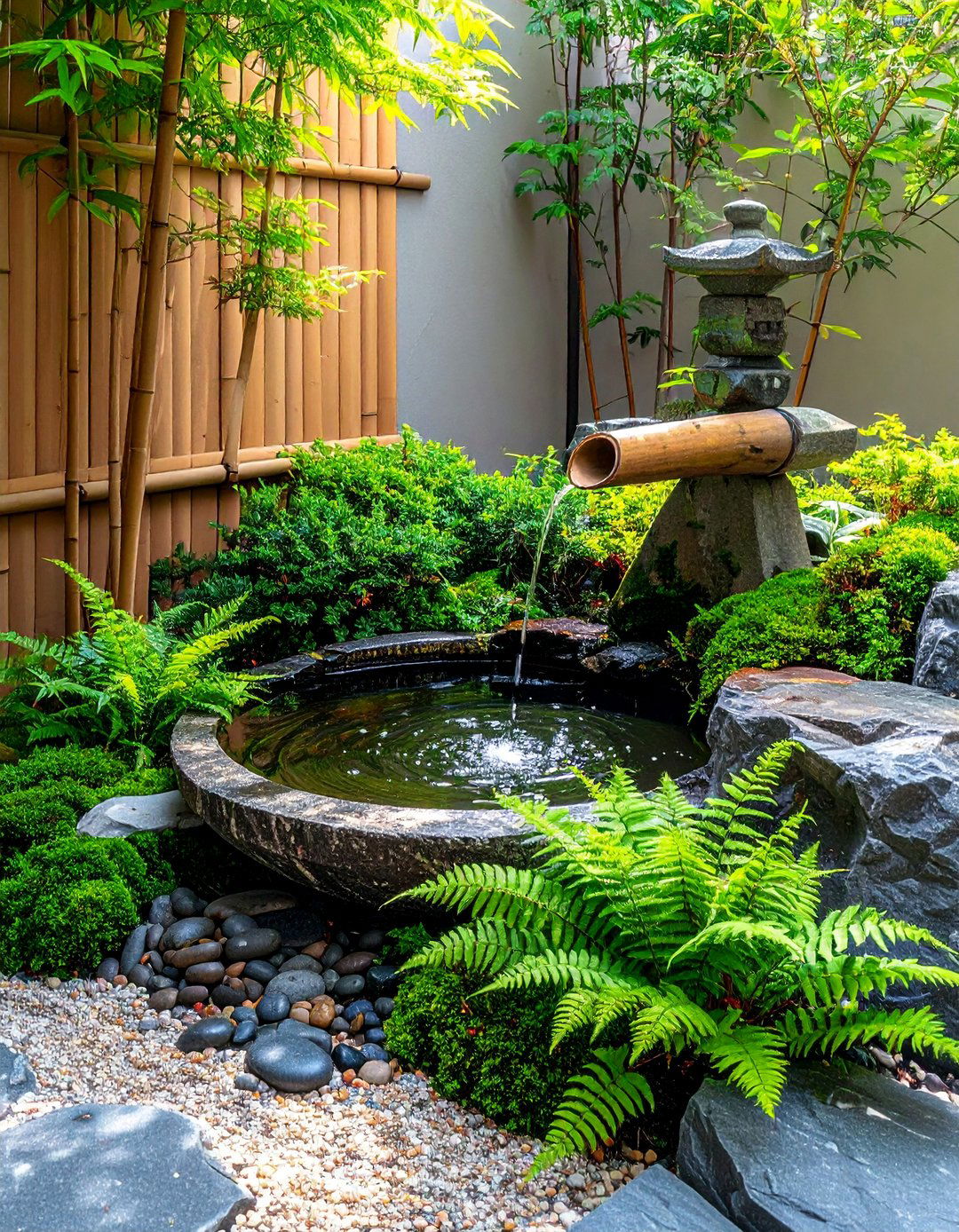
Introduce the gentle, rhythmic sound of a *shishi-odoshi*, or bamboo water fountain, to elevate the sensory experience of your small Zen garden. This traditional device consists of a pivoting bamboo tube that slowly fills with water, then tips over to empty with a distinct "clack" against a stone. Originally designed to scare away deer, its sound has become synonymous with tranquility and the passage of time. A miniature, self-contained version is perfect for a small patio or balcony. The combination of trickling water and the periodic clack of bamboo creates a meditative soundscape that helps mask urban noise and deepen your state of relaxation.
8. Asymmetrical Stepping Stone Path
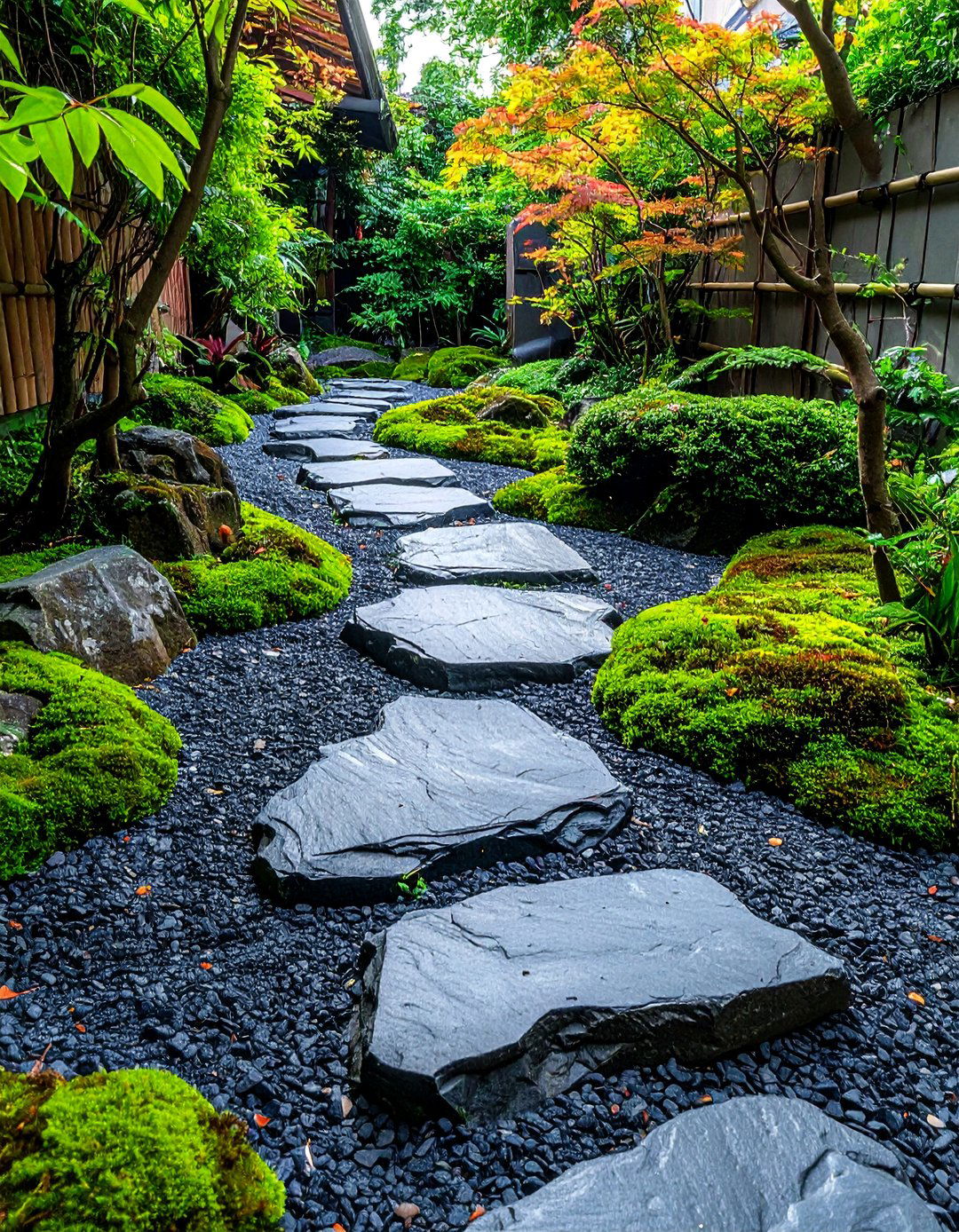
An asymmetrical path of stepping stones (*tobi-ishi*) guides both the foot and the eye through your Zen garden, encouraging a slower, more mindful pace. Unlike a straight, direct path, an irregular arrangement forces you to pay attention to each step. Use flat, natural stones of varying sizes and shapes, setting them into a bed of gravel or moss. The path shouldn't lead in a perfect line but should meander slightly, perhaps disappearing behind a larger rock or plant. This design technique creates a sense of discovery and makes the small garden feel larger and more mysterious, inviting you to explore its simple composition.
9. Planting a Dwarf Japanese Maple Tree
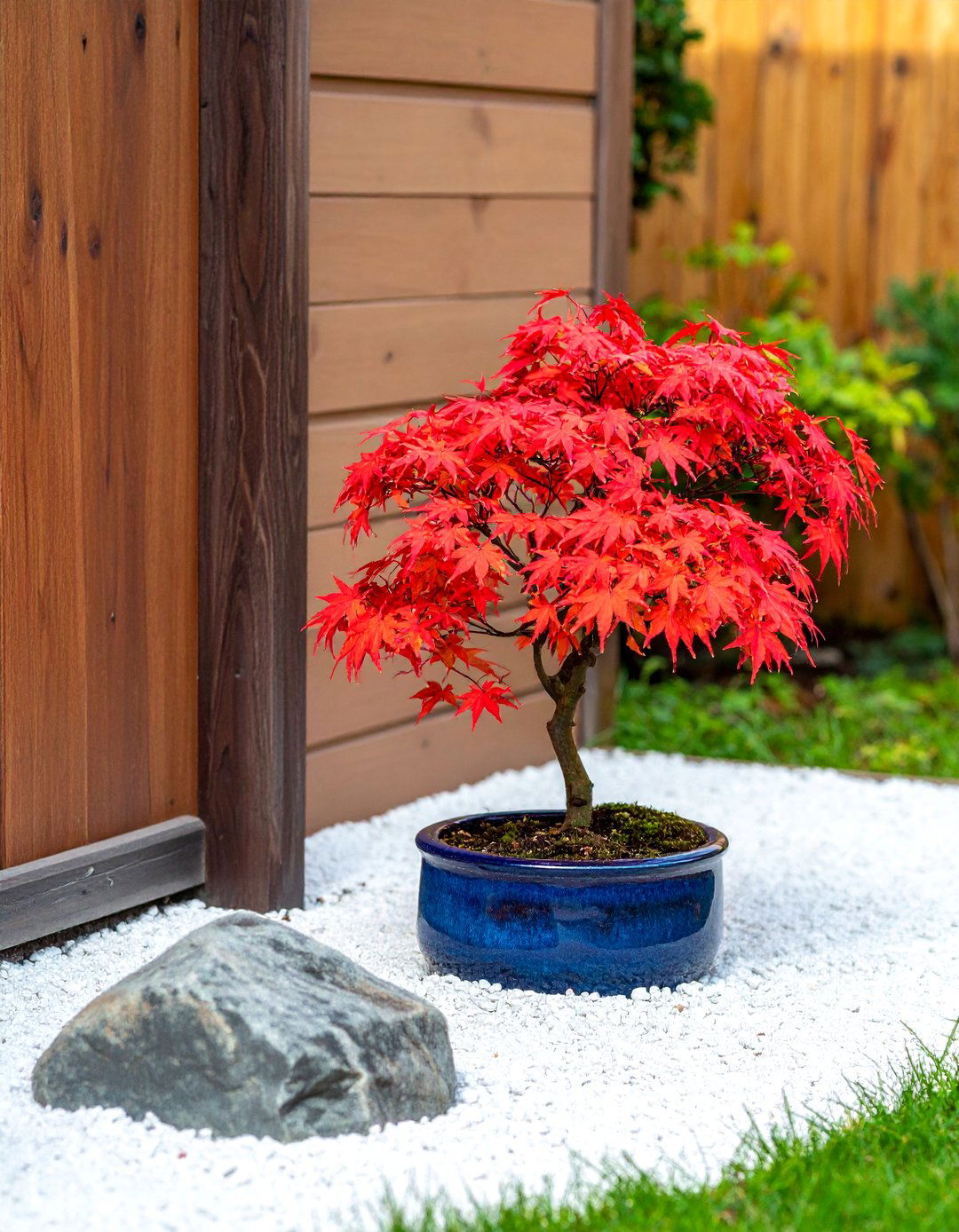
For a touch of seasonal color and delicate structure, a dwarf Japanese maple is an exceptional choice for a small Zen garden. These trees offer graceful, sculptural forms and foliage that changes dramatically throughout the year, from vibrant green or red in spring to fiery hues in autumn. Choose a compact variety like 'Mikawa yatsubusa' or 'Shishigashira' and plant it in a simple ceramic pot or directly into a corner of your garden. Its fine-textured leaves create a beautiful canopy, casting intricate shadows on the raked sand below. The tree becomes a living sculpture, embodying the changing seasons and the beauty of nature.
10. A Minimalist White Gravel Zen Garden
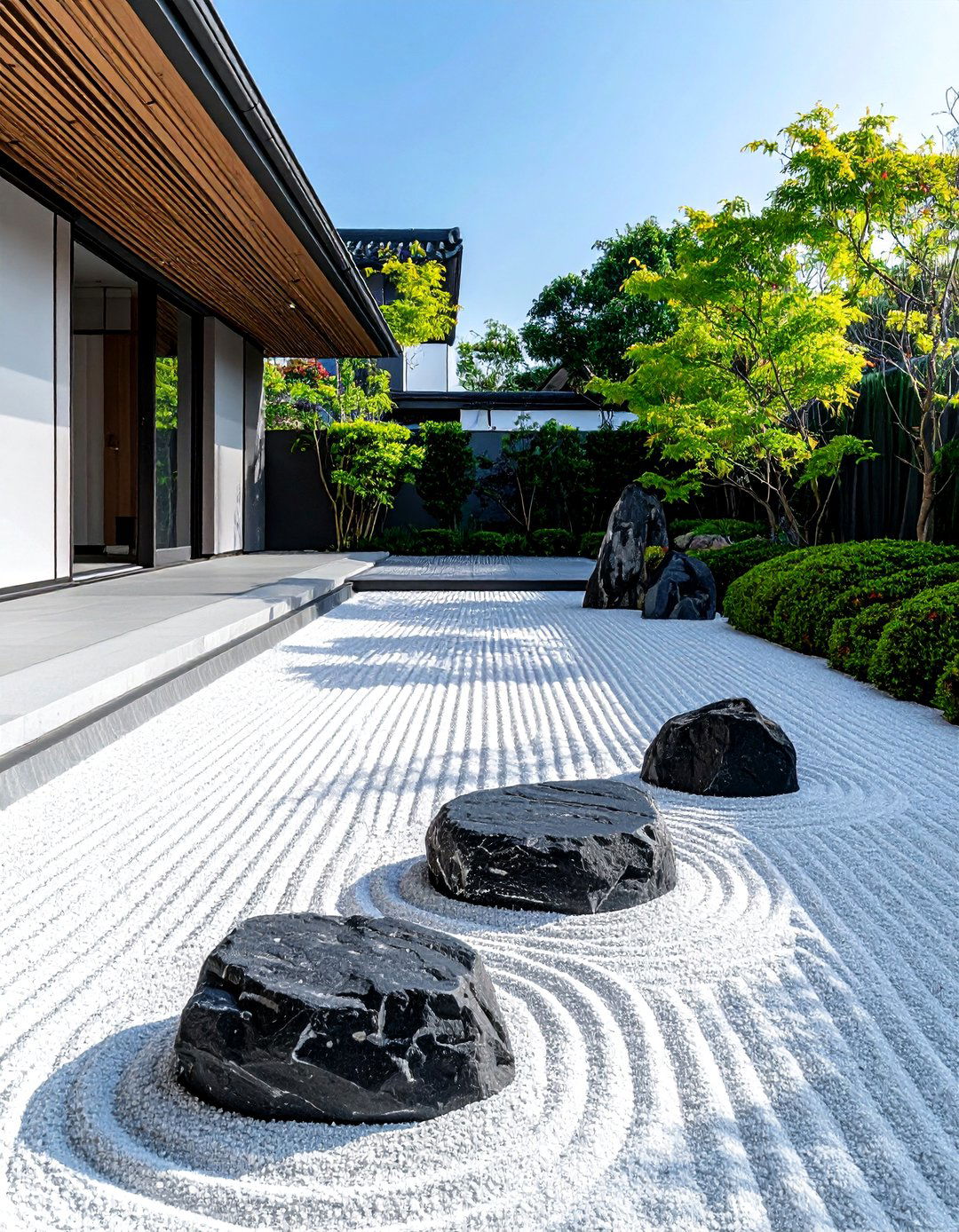
A garden composed primarily of fine white or light gray gravel creates a bright, clean, and highly minimalist aesthetic. This design emphasizes the "empty" space (*yohaku*), which is a crucial concept in Zen philosophy, representing possibility and stillness. The uniform white surface acts as a blank canvas, making the few carefully placed elements—such as dark, contrasting rocks or a single, sculptural plant—stand out with dramatic clarity. Raking this gravel into precise, linear patterns or gentle swirls becomes a focused, calming activity. This starkly beautiful approach is ideal for modern spaces and those seeking a truly uncluttered and serene visual environment.
11. Tiered Zen Garden on a Small Balcony
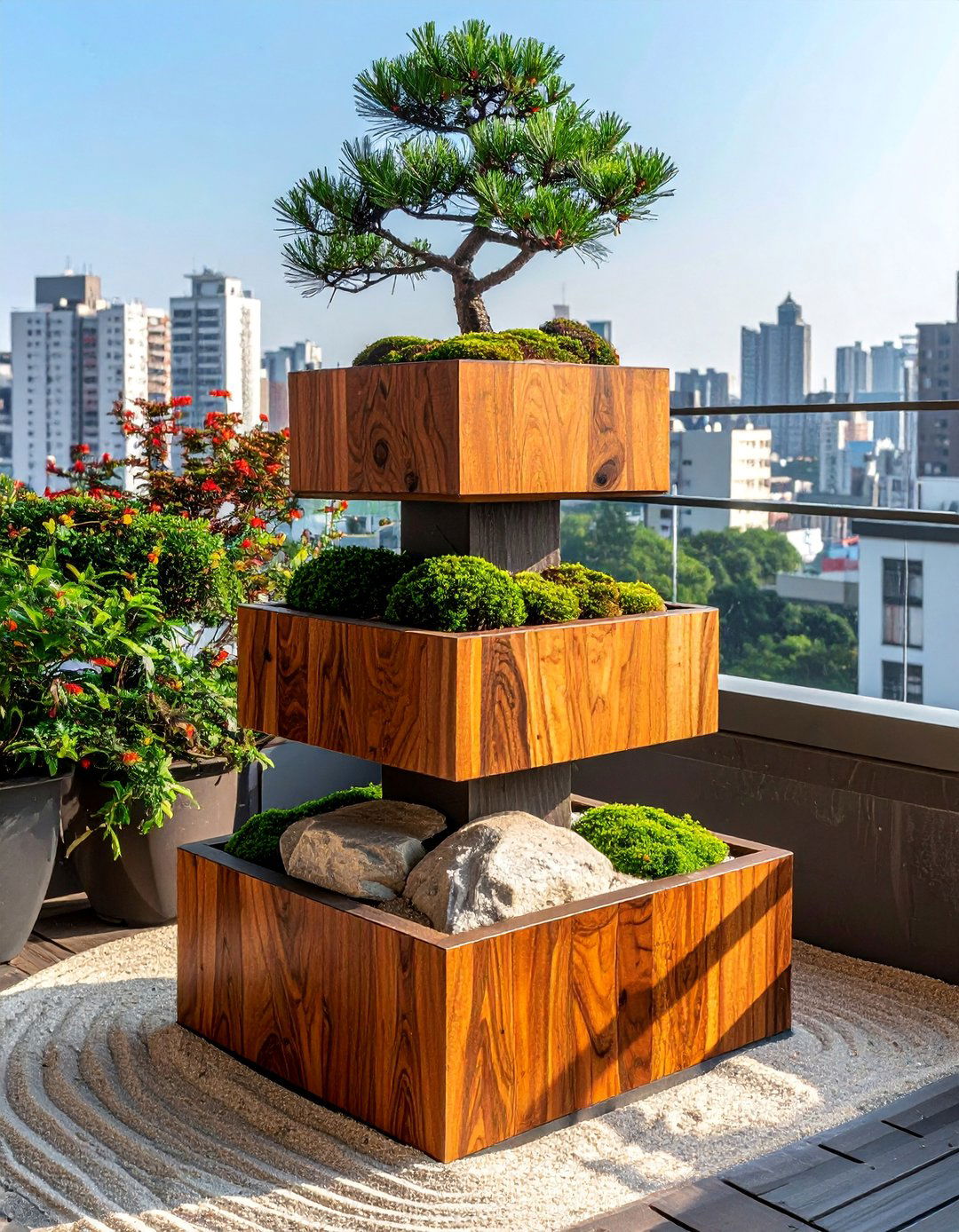
Maximize a tiny outdoor area by creating a tiered or multi-level Zen garden on a balcony. Use simple wooden or stone planters of varying heights or a set of sturdy outdoor shelves to build your design vertically. The lowest level could feature a raked sand box with stones, while a higher tier might hold a pot with a dwarf pine or a bed of lush moss. This approach allows you to incorporate more elements without cluttering the floor space. It adds depth and dimension, drawing the eye upwards and creating a more complex and engaging miniature landscape. This is a practical solution for urban dwellers with limited ground-level space.
12. Integrating a Small Water Basin (Tsukubai)
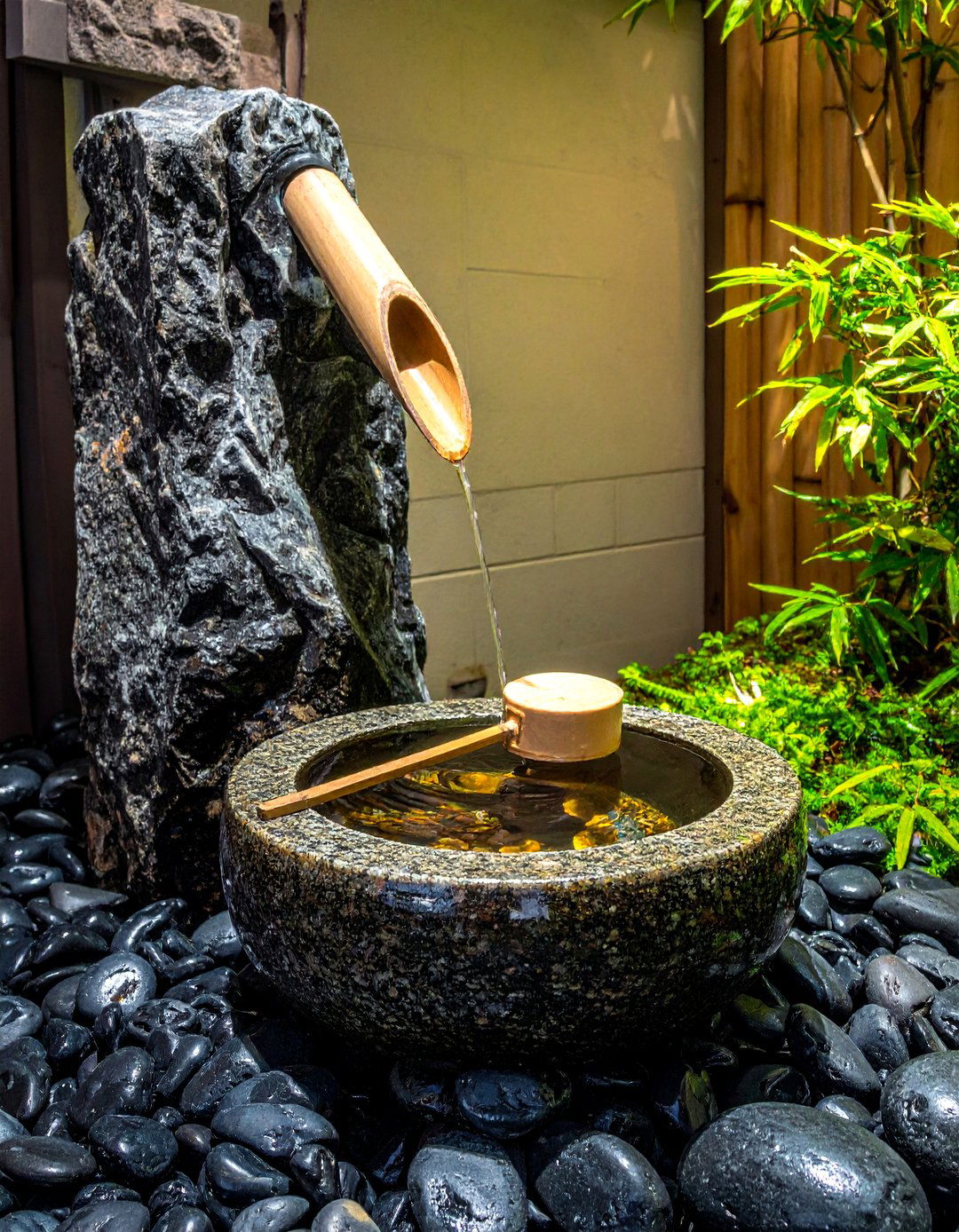
A *tsukubai*, or water basin, is a traditional element that brings the purifying and reflective qualities of water into your garden. Historically used for ritual cleansing, a small, simple stone basin filled with water creates a focal point for contemplation. You can place a bamboo ladle (*hishaku*) across the top for an authentic touch. The still water reflects the sky and surrounding foliage, adding a dynamic layer of light and movement to the space. Even without a flowing fountain, the presence of a calm water basin introduces a powerful sense of tranquility and a connection to this essential natural element, enhancing the garden's peaceful atmosphere.
13. Sculptural Succulents in a Zen Garden
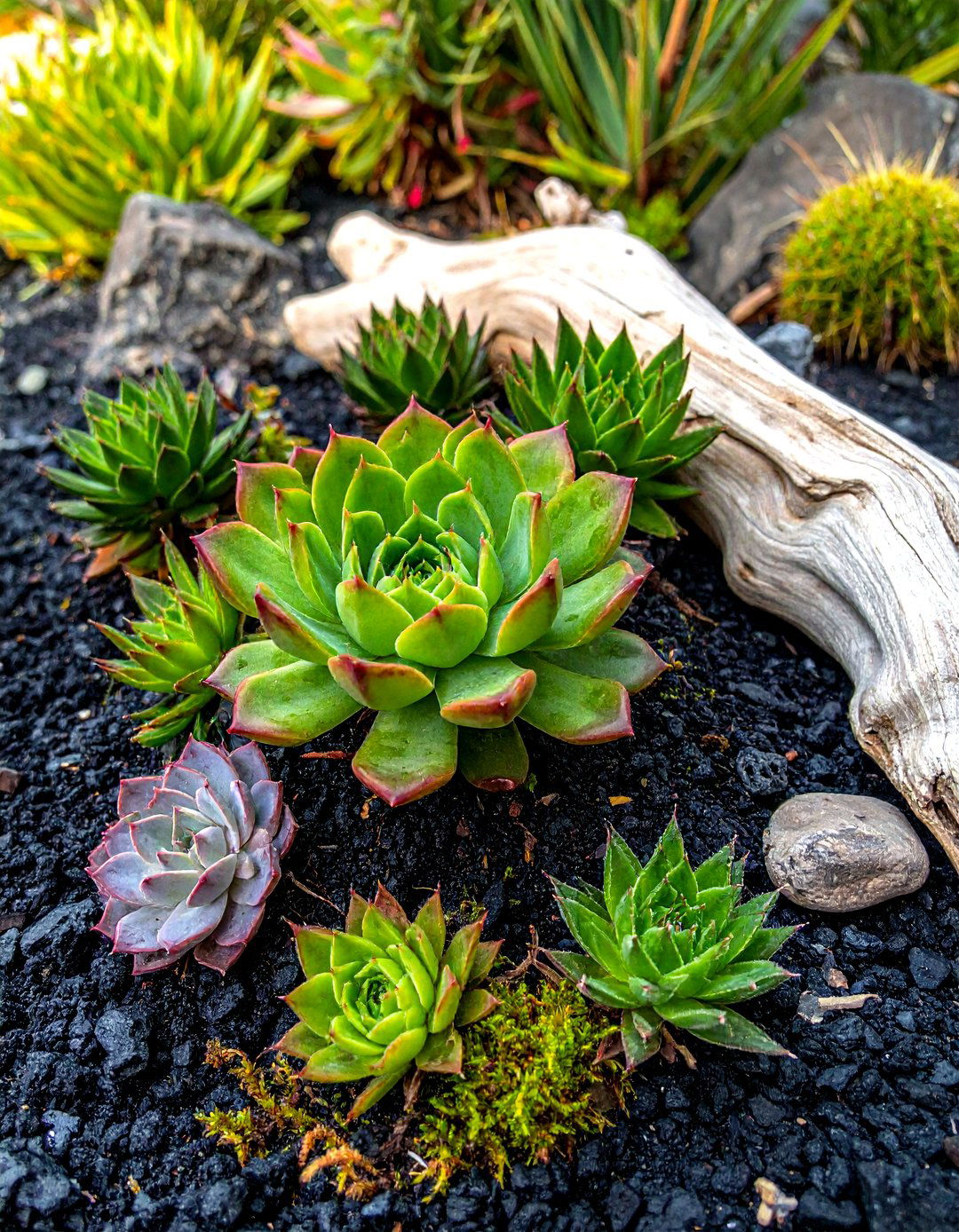
While not traditional, succulents can be a wonderful, low-maintenance addition to a modern small Zen garden. Their unique geometric shapes, varied colors, and sculptural forms act as living sculptures that complement the textures of sand and stone. Choose varieties like Haworthia, Echeveria, or small agaves that have a simple, striking appearance. Plant them in clusters or as single specimens in a bed of dark gravel to make their forms pop. Their resilience and minimal water needs make them a practical choice for a garden designed for ease of care and quiet observation, adding a contemporary twist to the classic aesthetic.
14. Creating Patterns with Contrasting Gravel
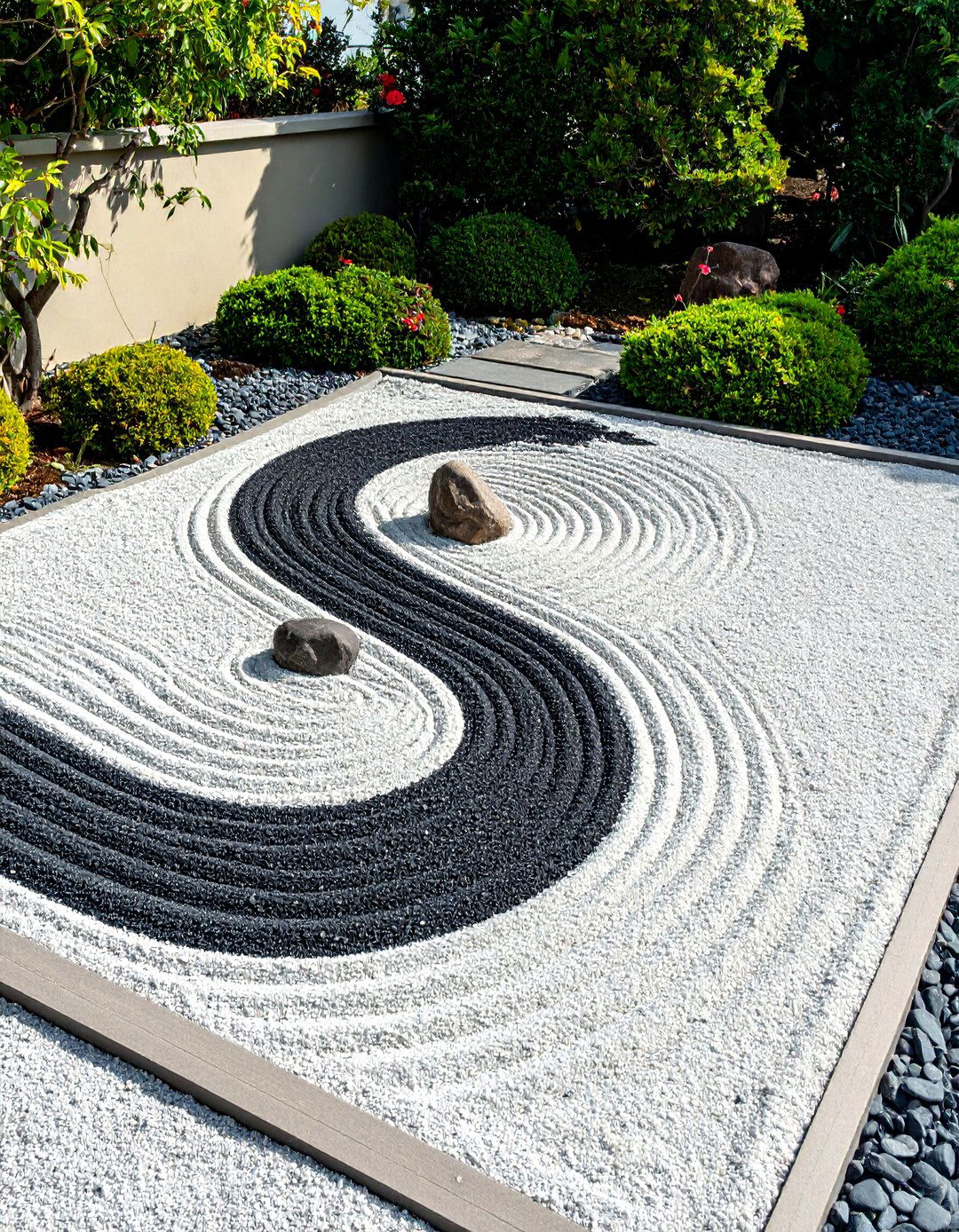
Add visual depth and intricate detail to your small Zen garden by using contrasting colors of gravel or sand. Instead of a single uniform color, create distinct zones or flowing patterns with two or more tones, such as white and black, or gray and beige. You could use dark gravel to outline a "shoreline" around a "lake" of white sand, or create a yin-yang symbol for a more direct representation of balance. This technique allows for more complex designs without adding clutter. Raking patterns within the different colored sections can further enhance the visual interest, turning the ground plane into a piece of abstract art.
15. The Enclosed Courtyard Zen Garden
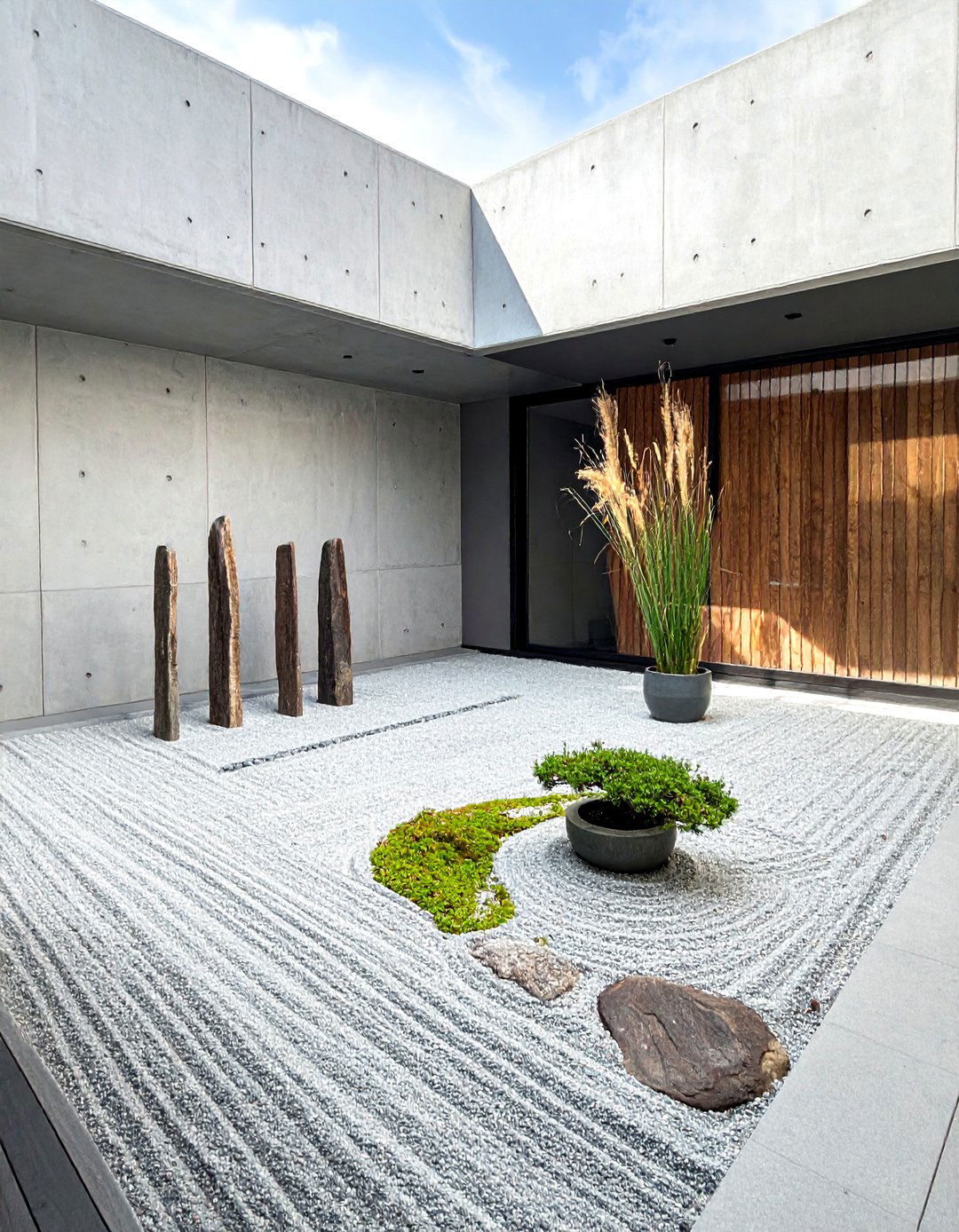
Transform a small, enclosed courtyard or lightwell into an intimate Zen sanctuary. The surrounding walls provide an immediate sense of privacy and enclosure, making the space feel like a secluded world. In this setting, focus on a simple layout: a central area of raked gravel, a few thoughtfully placed boulders to represent a mountain range, and perhaps a single potted bamboo plant for verticality. The play of light and shadow from the overhead sky across the walls and garden elements becomes a key feature. This design turns a potentially forgotten architectural space into a peaceful focal point that can be viewed from inside the home.
16. A Zen Garden with Restrained Floral Accents
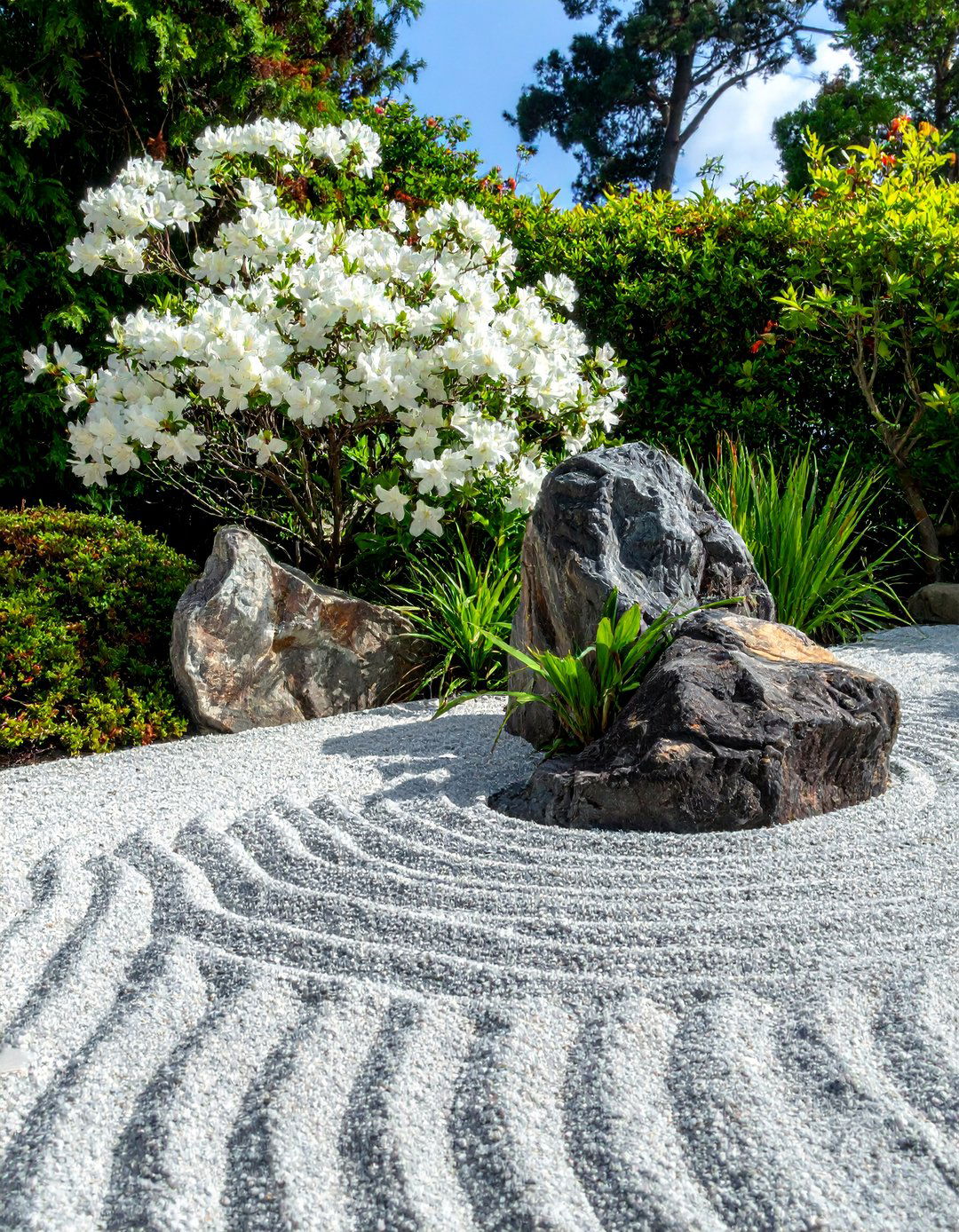
Although Zen gardens emphasize greenery and structure, a single, restrained floral element can be a poignant addition. The key is to choose a plant that offers a brief, beautiful bloom, reminding the observer of the transient nature of life (*mono no aware*). A small azalea that produces a burst of spring color, a miniature iris, or a dwarf flowering cherry in a pot would be suitable choices. The plant should not overwhelm the space but act as a subtle accent. For most of the year, its green foliage will blend into the design, making its fleeting blossoms an even more special and anticipated event.
17. Using Reclaimed Wood Elements
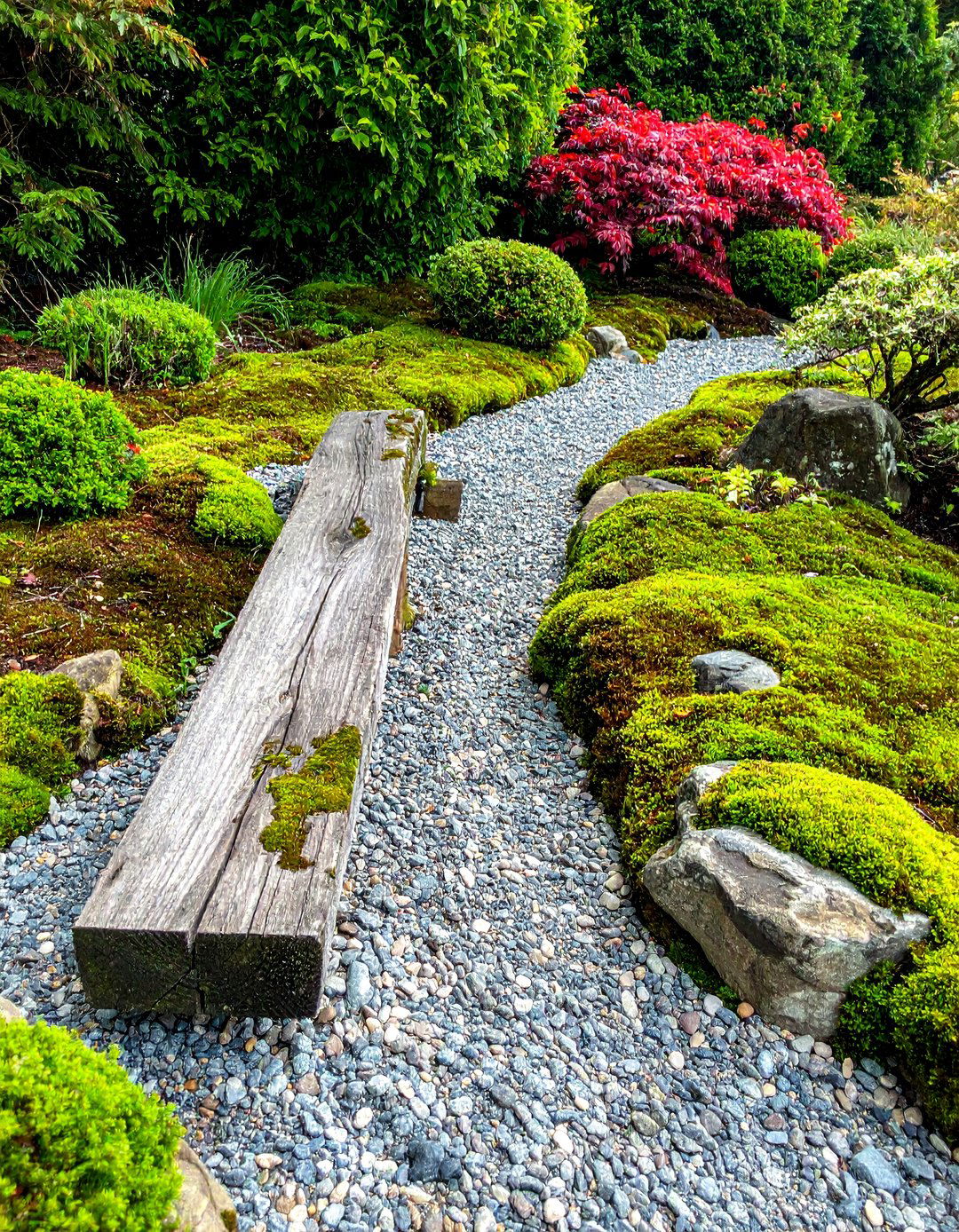
Introduce warmth and rustic texture into your small Zen garden by incorporating reclaimed wood. An old wooden beam can be set into the gravel to act as a simple bridge over a dry stream bed. A weathered piece of driftwood can serve as a sculptural focal point, its organic, twisted shape contrasting beautifully with smooth stones and raked sand. You could also use reclaimed wood to build the border for your garden bed or a simple, low bench for seating. The aged patina of the wood adds a sense of history and natural decay, aligning perfectly with the Wabi-sabi principle of finding beauty in imperfection.
18. A Zen Garden with a Moon Viewing Platform
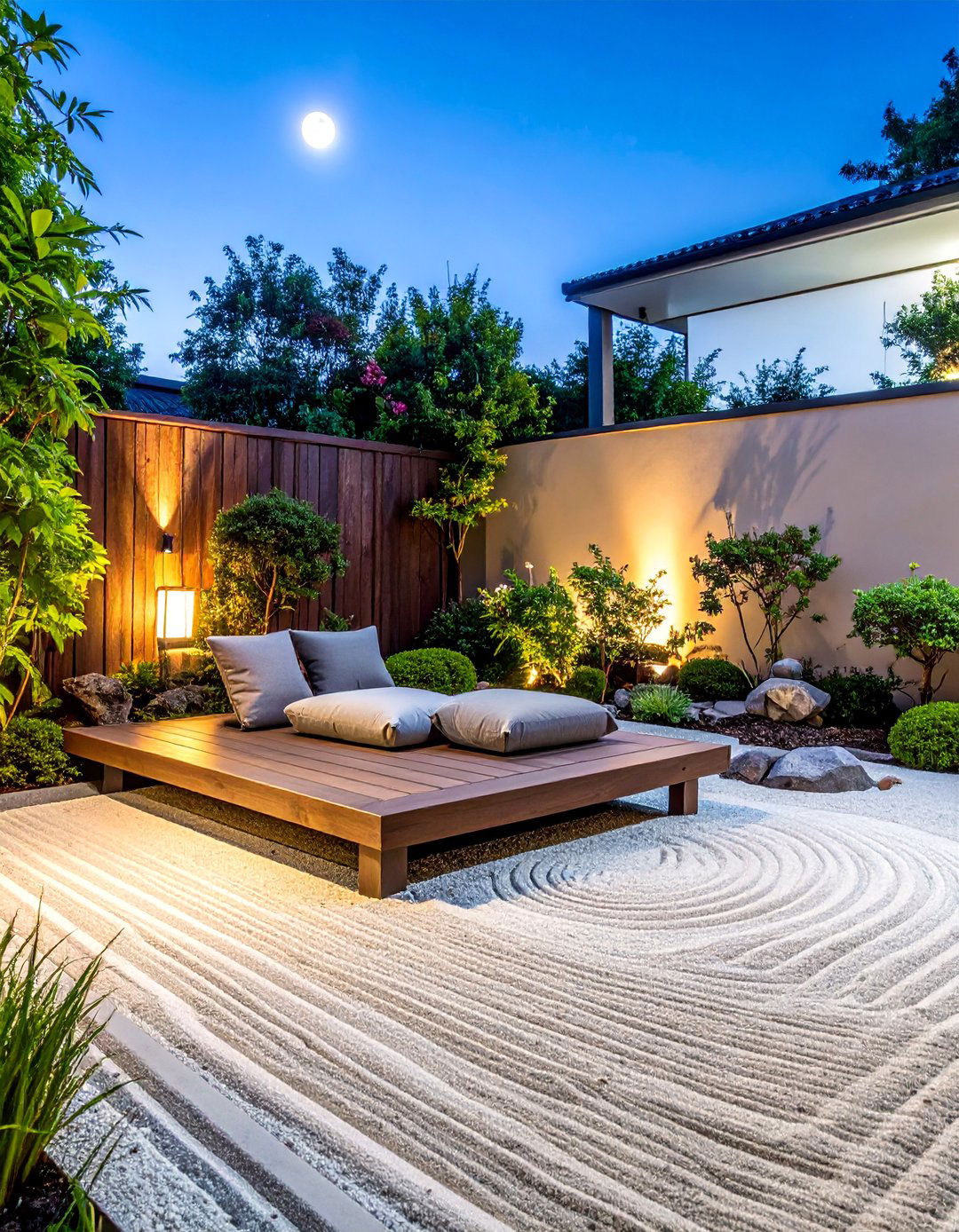
Create a dedicated spot for quiet observation by building a small, low platform, or *tsukimi-dai*, traditionally used for moon viewing. In a small garden, this can be a simple, slightly raised deck made of dark-stained wood, just large enough for one or two cushions. Placing it at the edge of your raked sand area provides a designated space to sit and contemplate the garden's composition. The platform itself becomes a strong geometric element in the design, contrasting with the organic shapes of rocks and plants. It elevates the garden from something you just look at to a space you can truly inhabit.
19. Focusing on Foliage Texture Variation
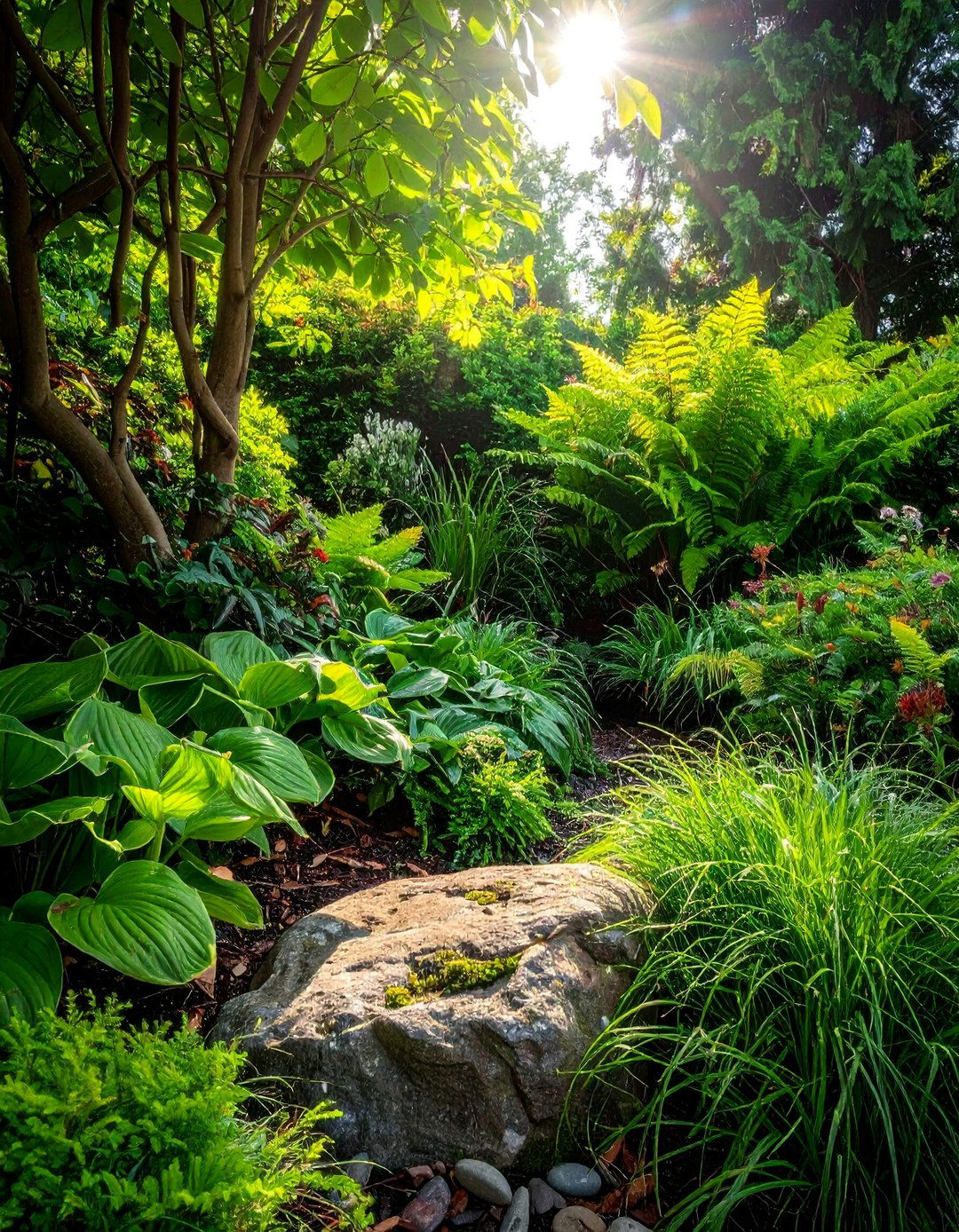
Design a visually rich Zen garden by focusing on the subtle variations in plant foliage textures. Instead of relying on flowers, create interest by combining different types of leaves. Pair the soft, feathery fronds of a dwarf fern with the glossy, smooth leaves of a Sarcococca. Contrast the fine needles of a miniature pine with the broad, velvety surface of a moss patch. This approach creates a complex tapestry of green that is both soothing and engaging. It encourages closer inspection and appreciation for the simple, natural beauty of the plants themselves, which is a core tenet of Zen garden design philosophy.
20. A Portable Indoor Desktop Zen Garden

For those with absolutely no outdoor space, a portable indoor Zen garden offers a perfect solution for a miniature retreat. These self-contained kits typically include a small tray, fine sand, a miniature rake, and a few polished stones. You can arrange and rearrange the elements on your desk or a small table whenever you need a moment of calm. The physical act of raking the sand and positioning the stones is a simple yet effective mindfulness exercise that can help reduce stress during a busy day. It serves as a constant, tangible reminder to pause, breathe, and find a moment of peace.
Conclusion:
Ultimately, creating a small Zen garden is about designing a space that personally resonates with you and promotes tranquility. Whether you have a tiny balcony, a patio corner, or just a tabletop, the principles of simplicity, naturalism, and asymmetry can guide you. By carefully selecting elements like stone, sand, water, and minimal plantings, you can craft a miniature landscape that serves as a powerful retreat for daily contemplation. The goal is not just to create a beautiful scene, but to cultivate a peaceful state of mind, making your garden a true sanctuary for relaxation and reflection.

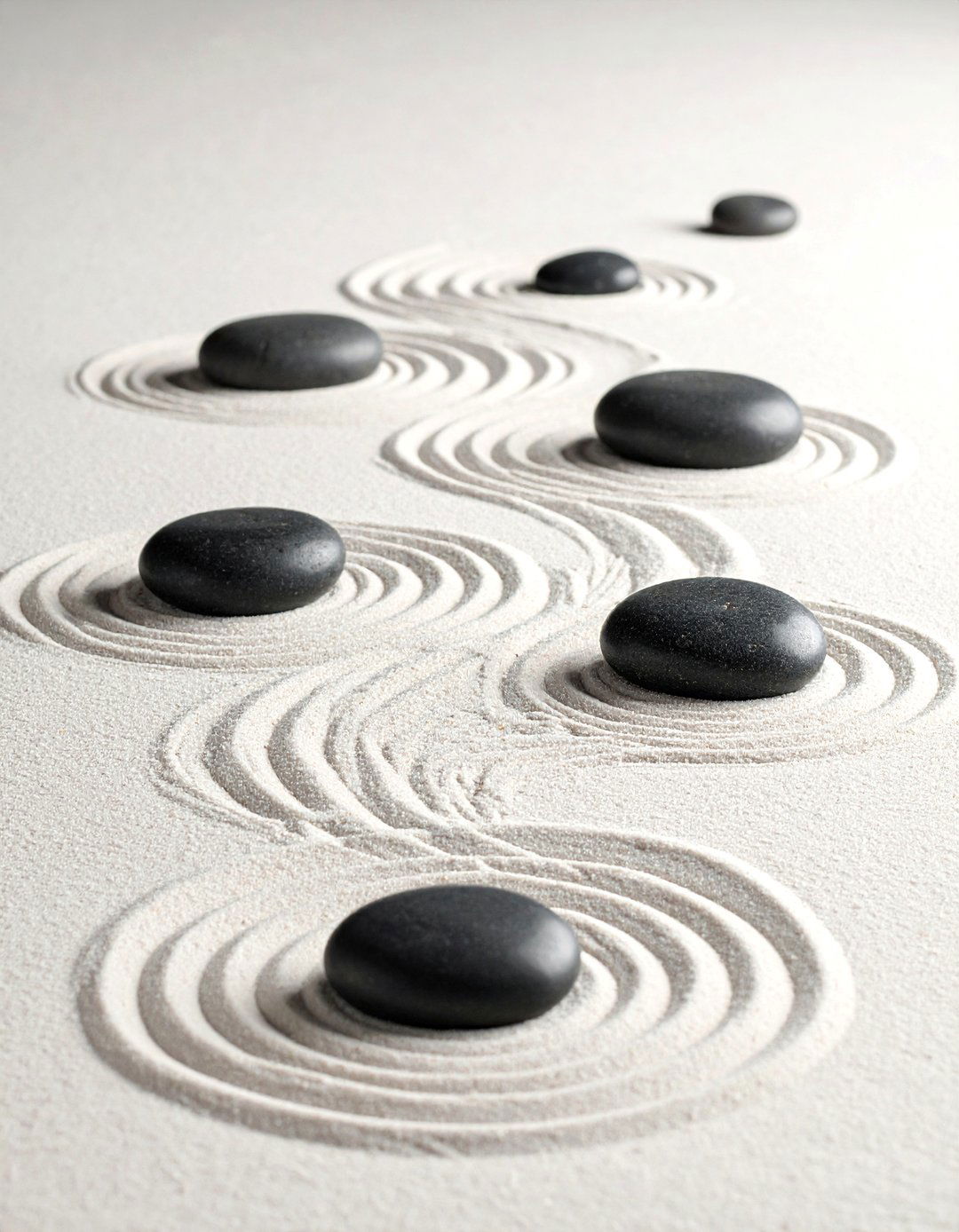
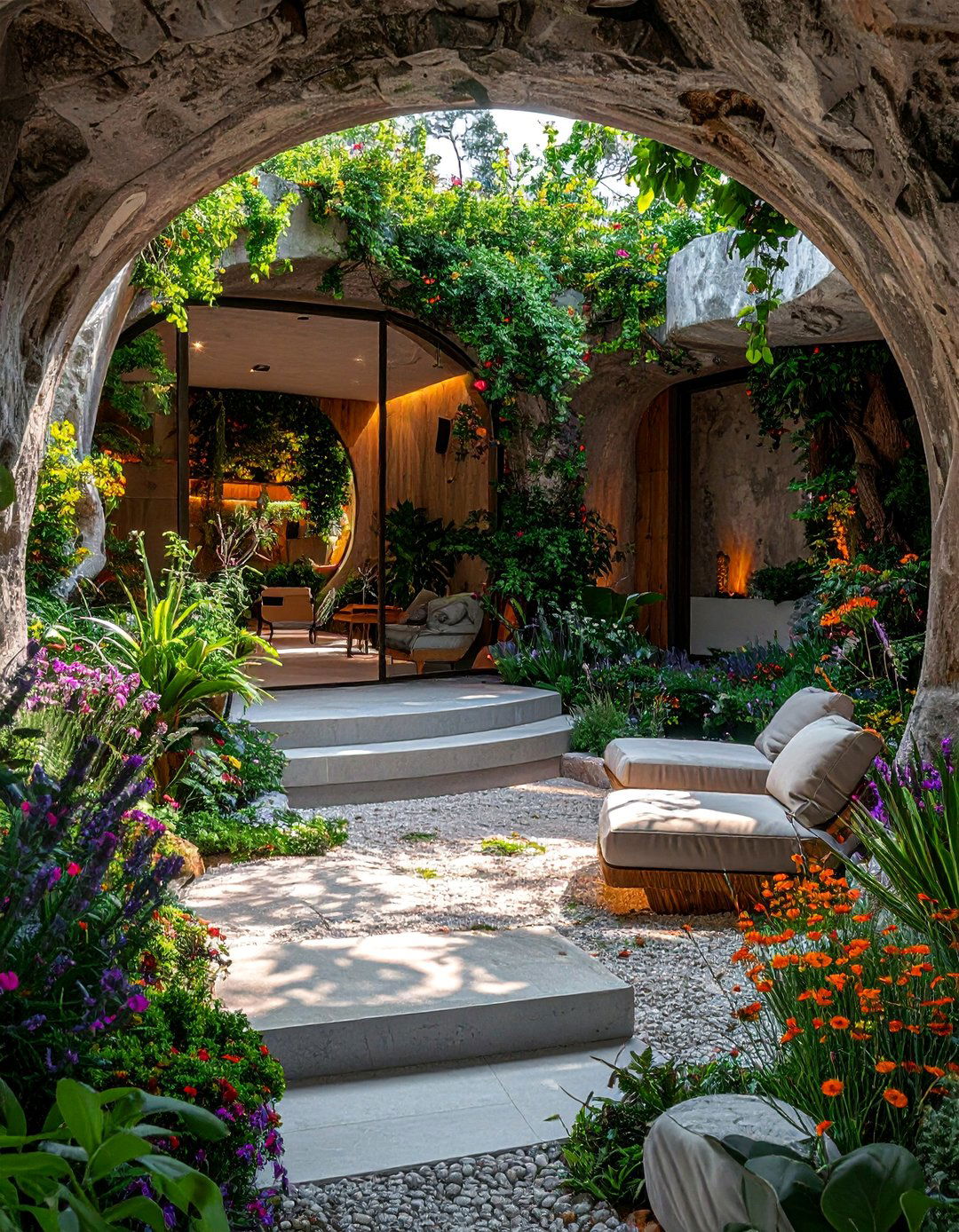
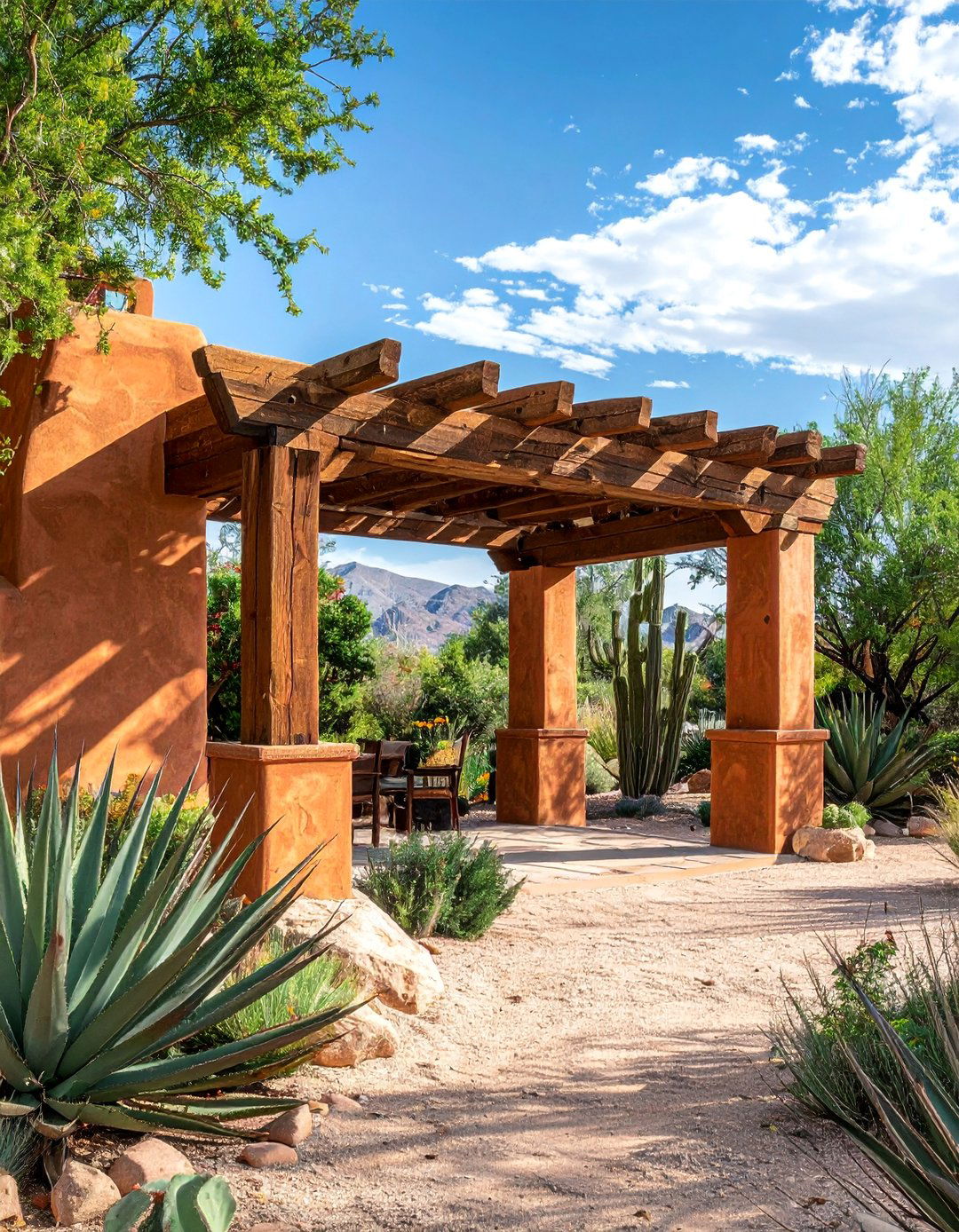
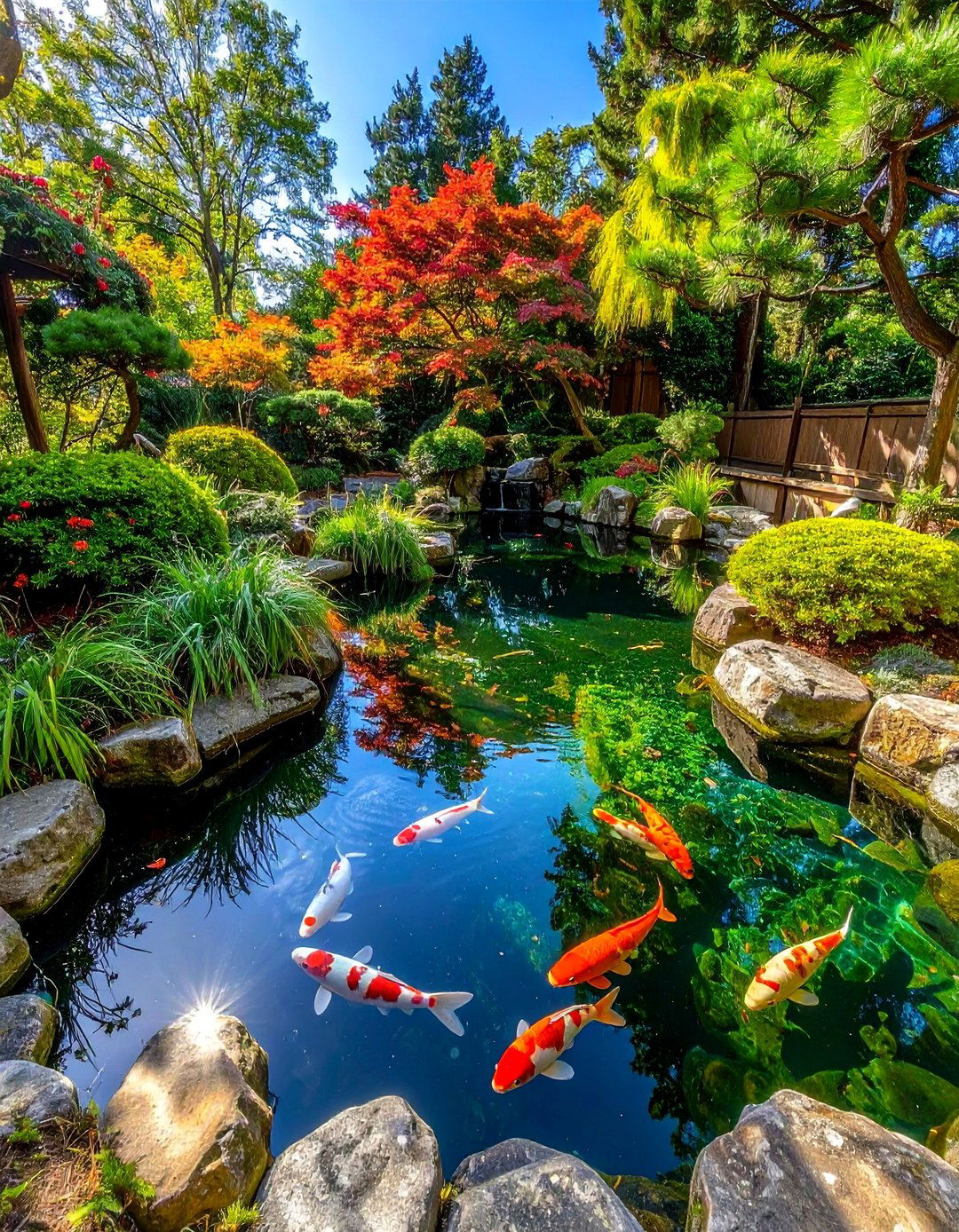
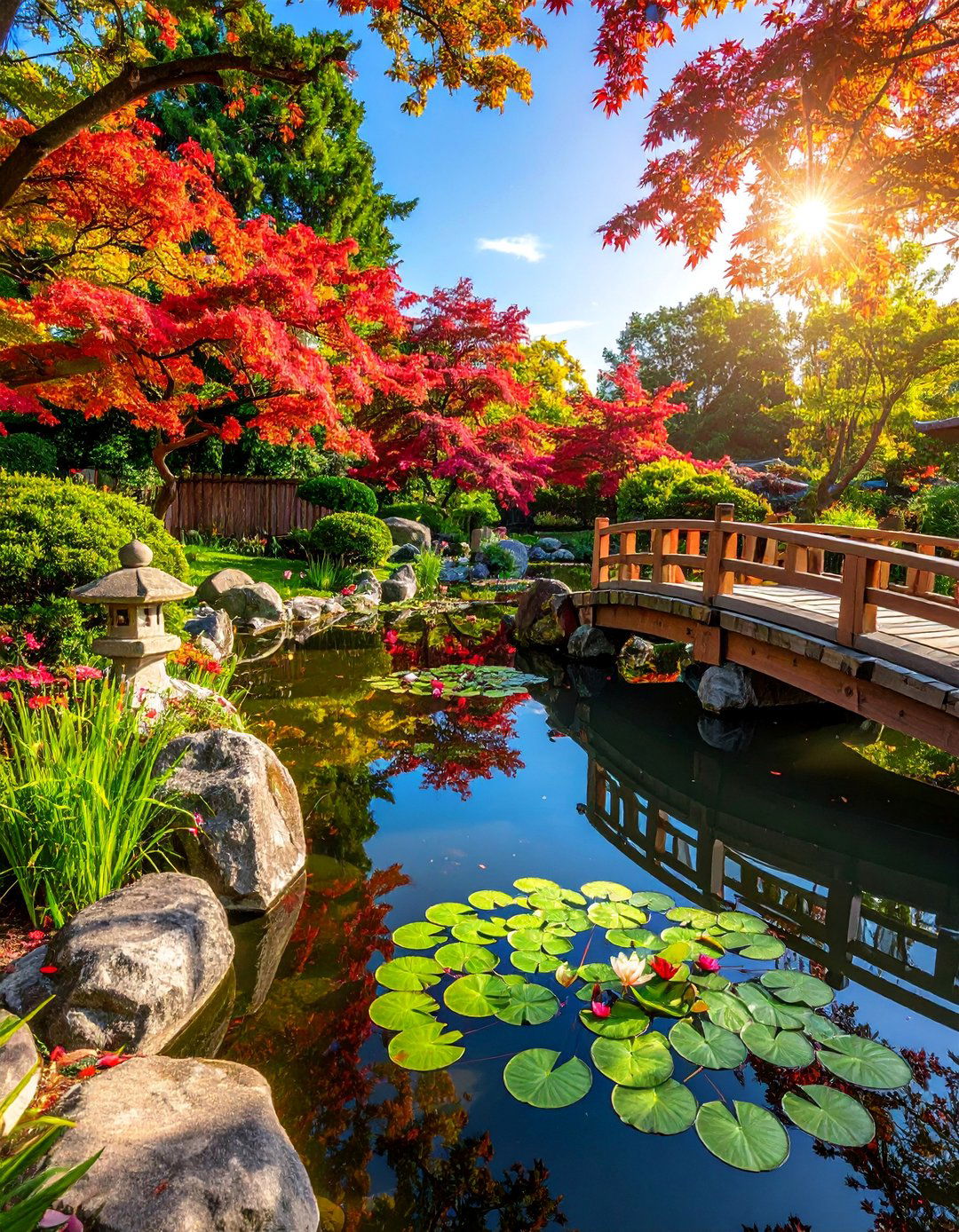
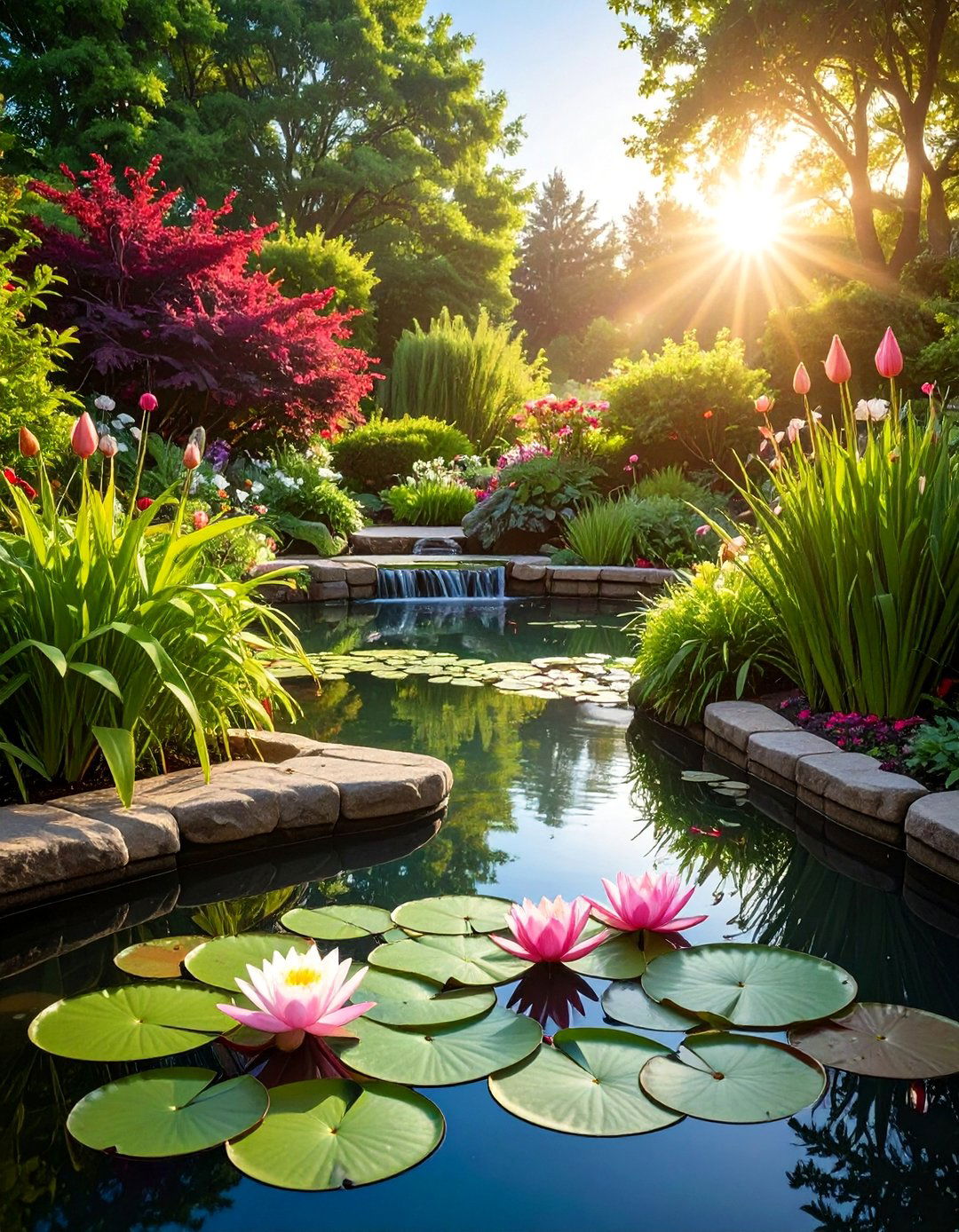
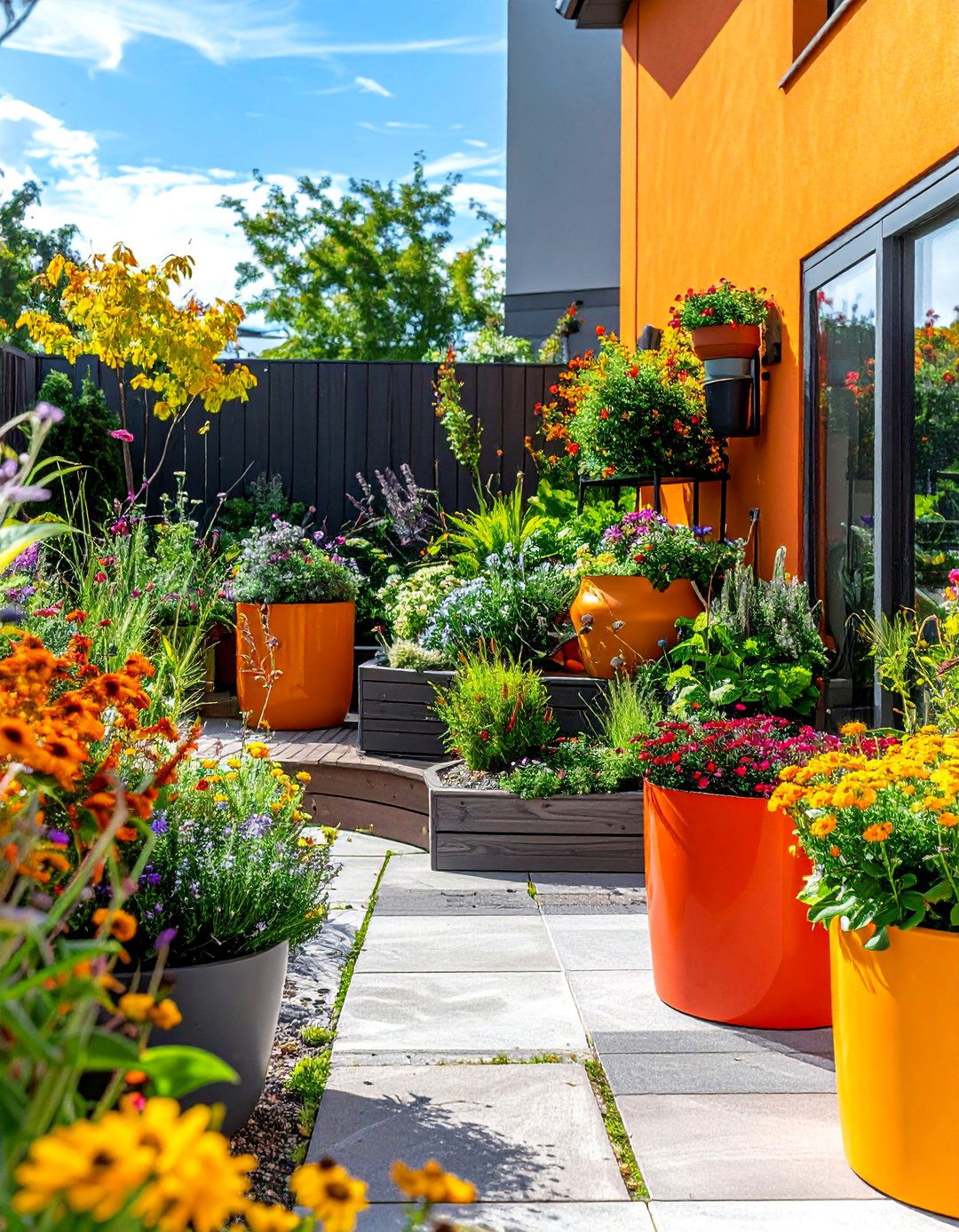
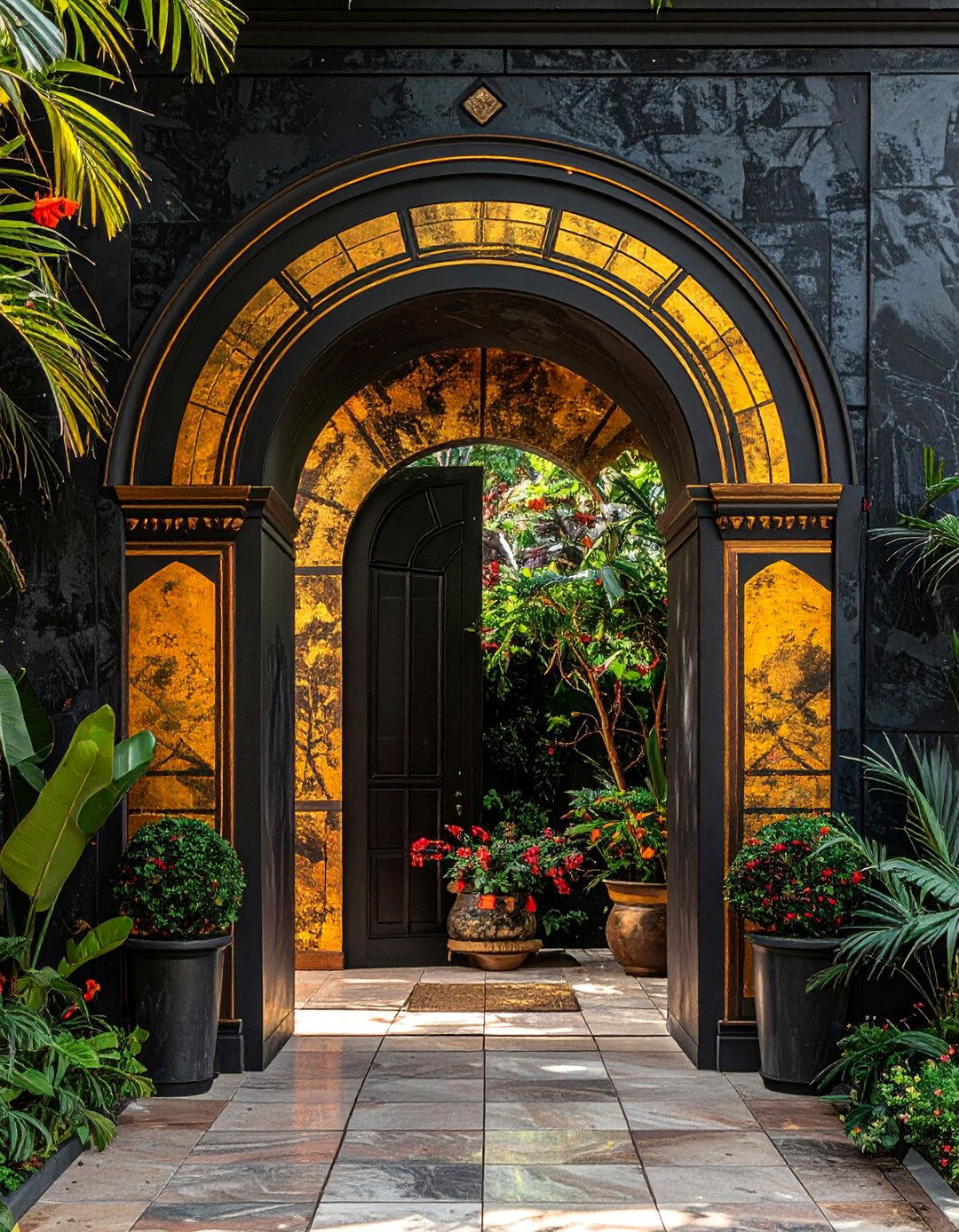
Leave a Reply